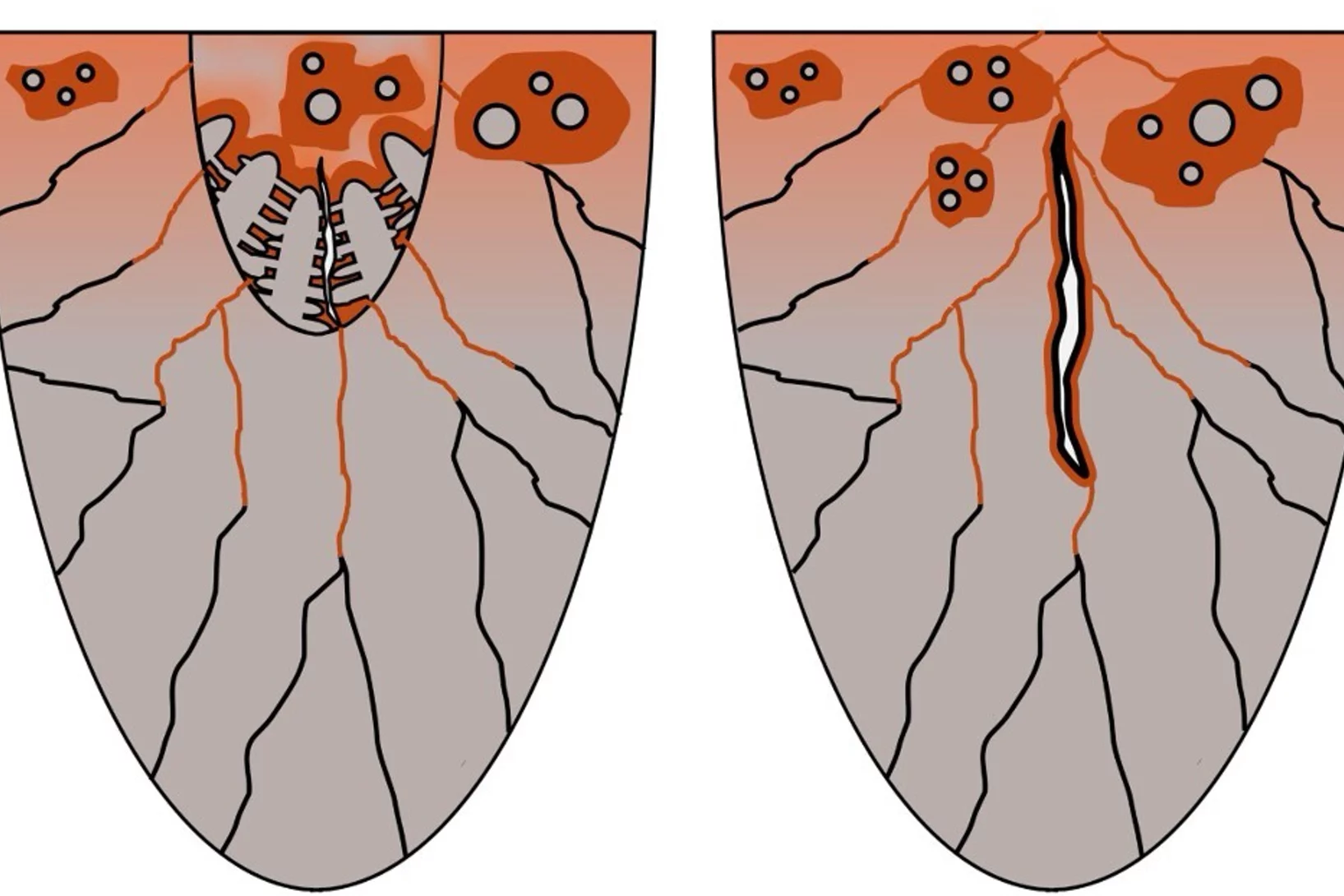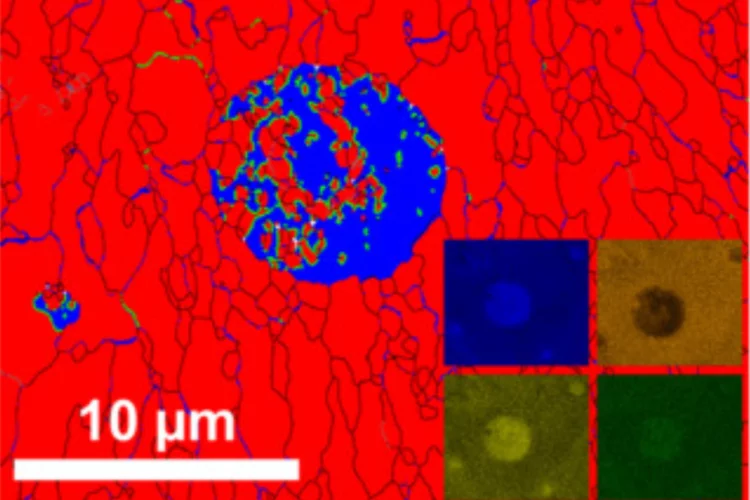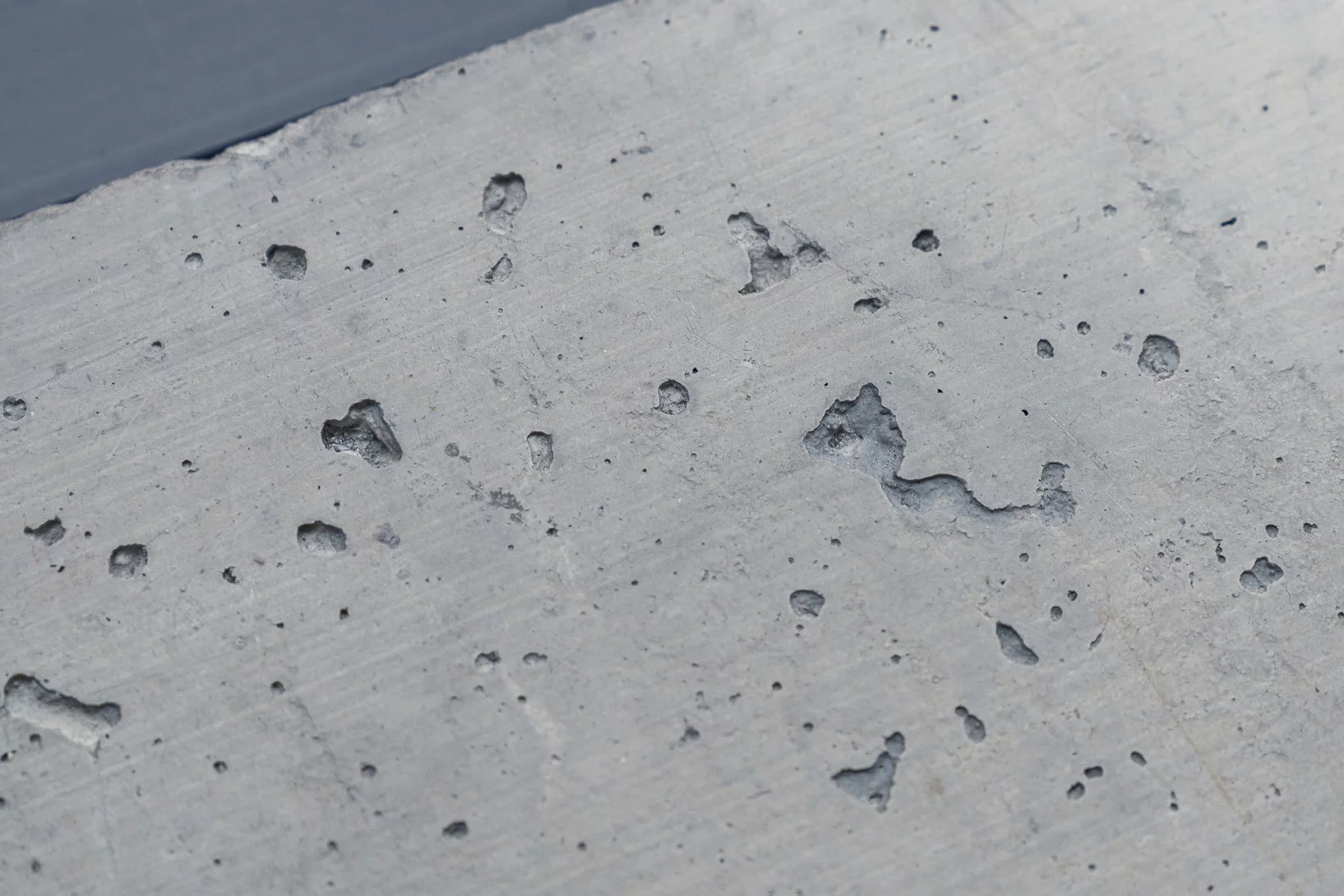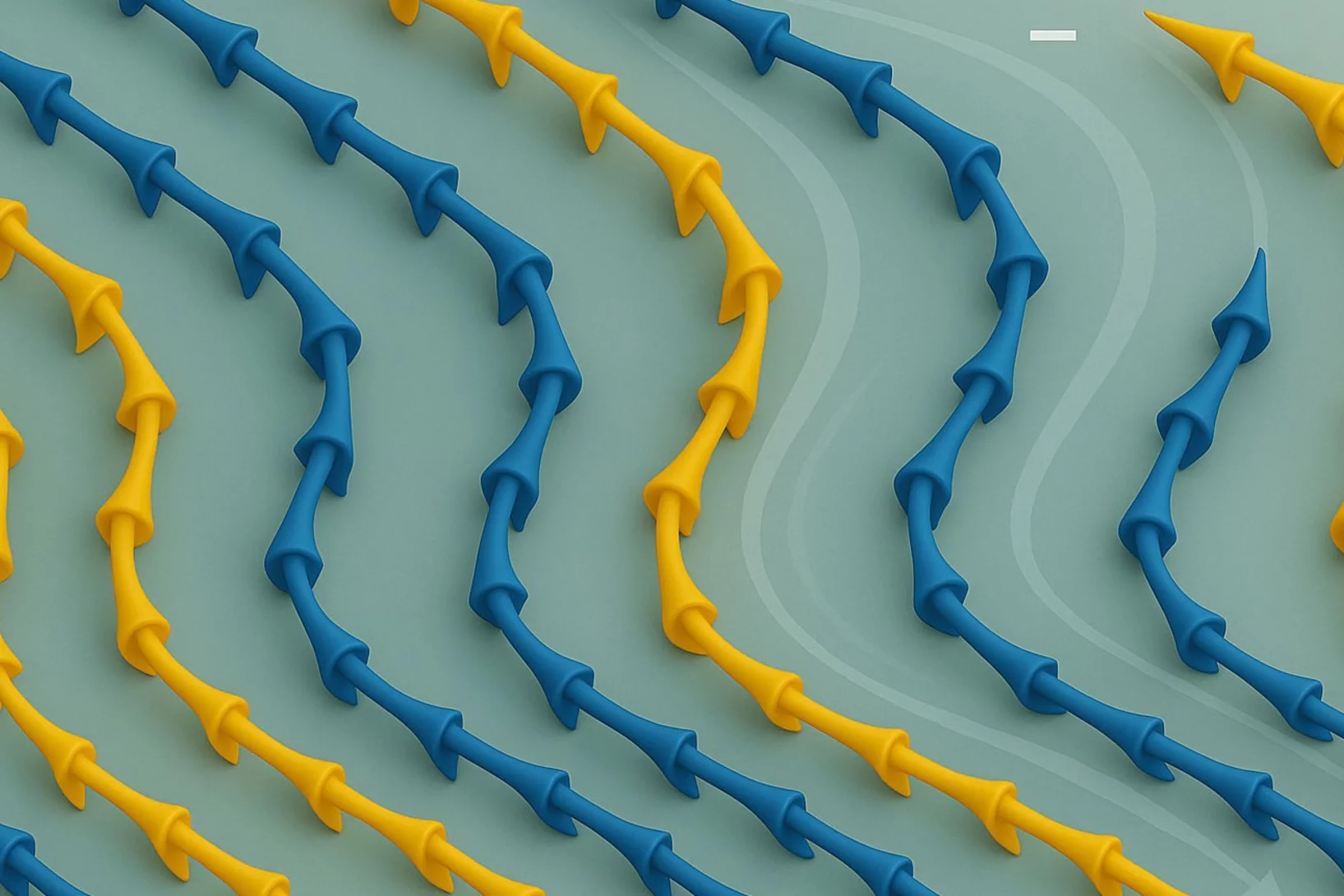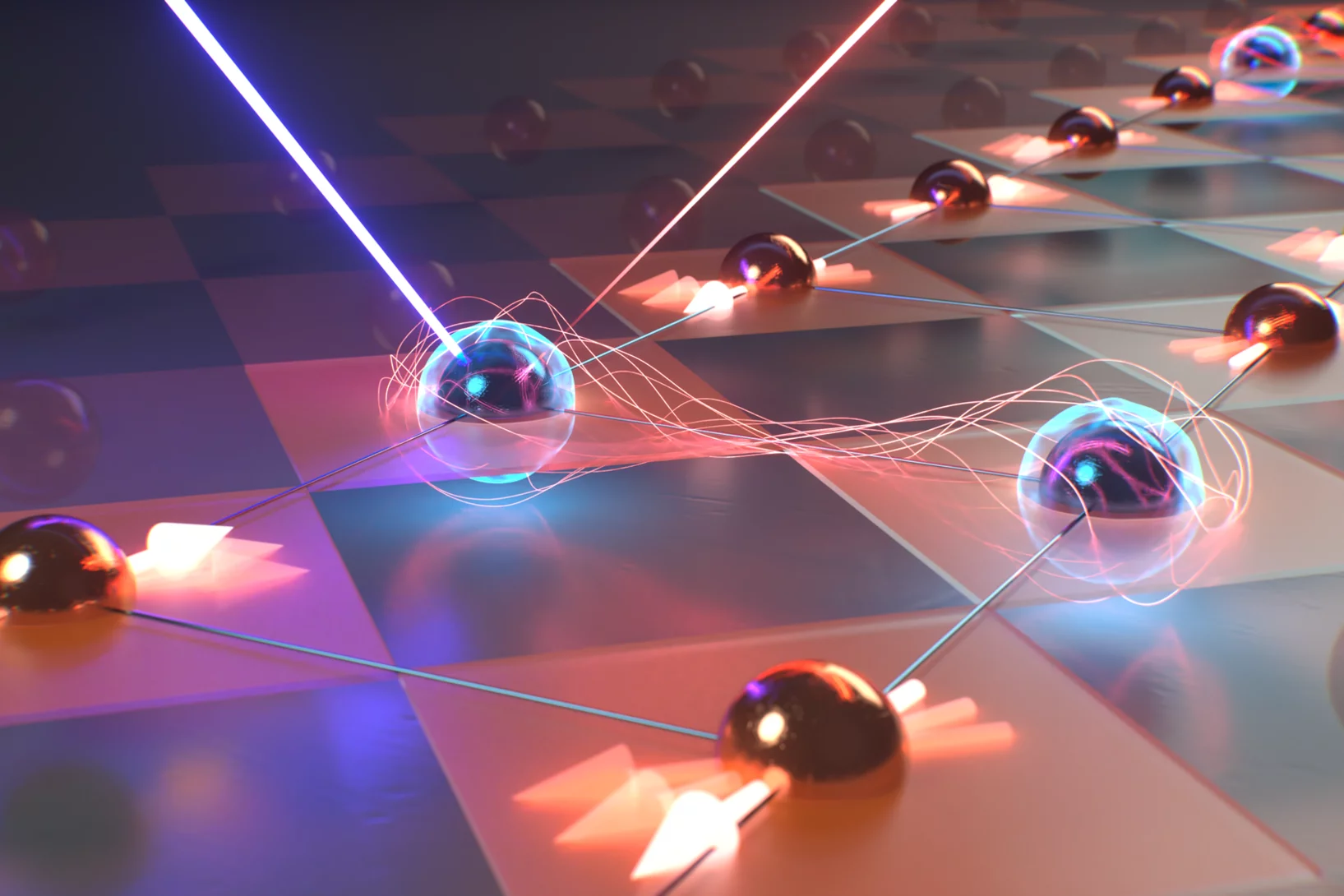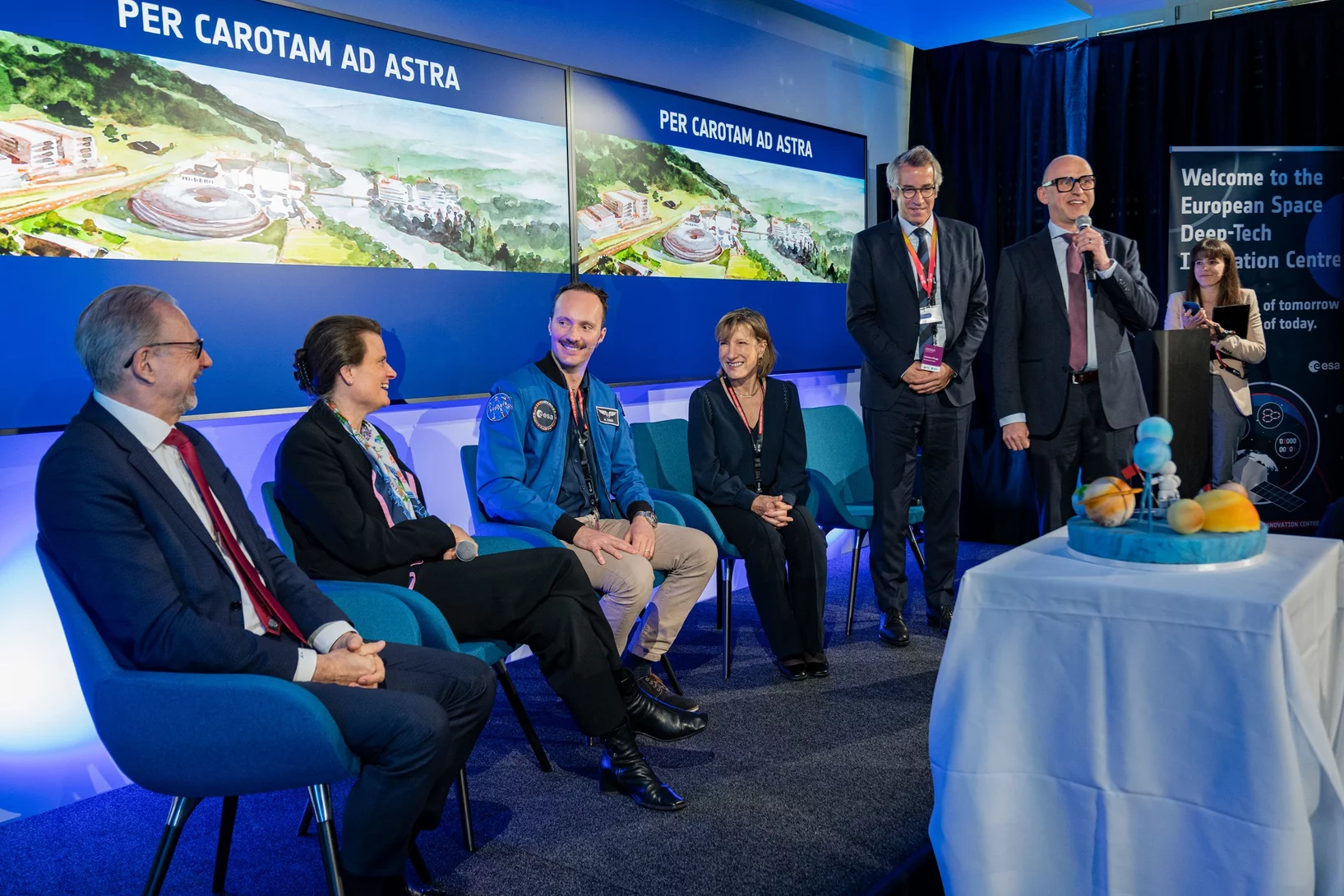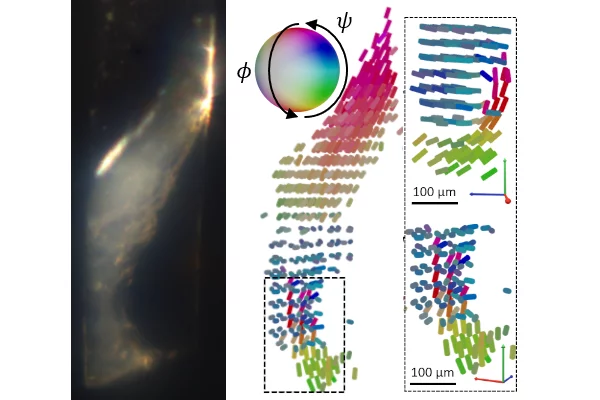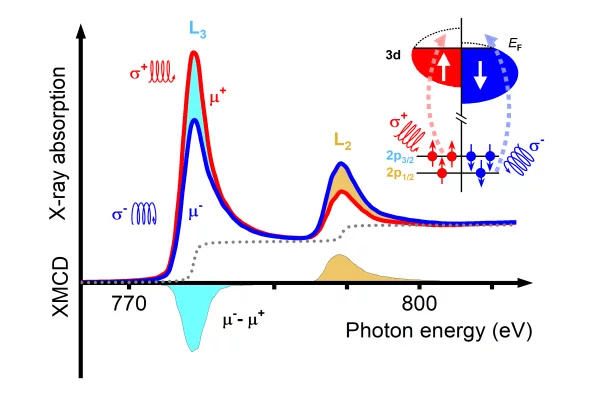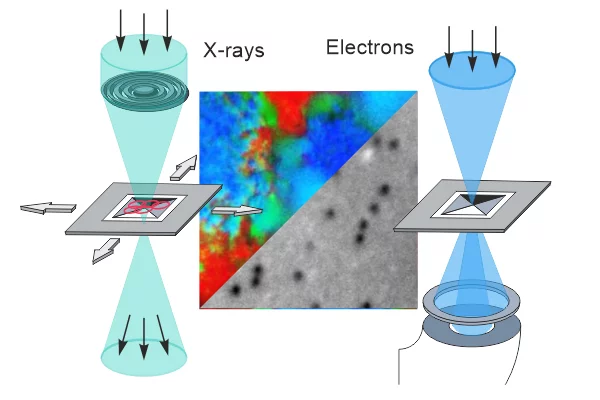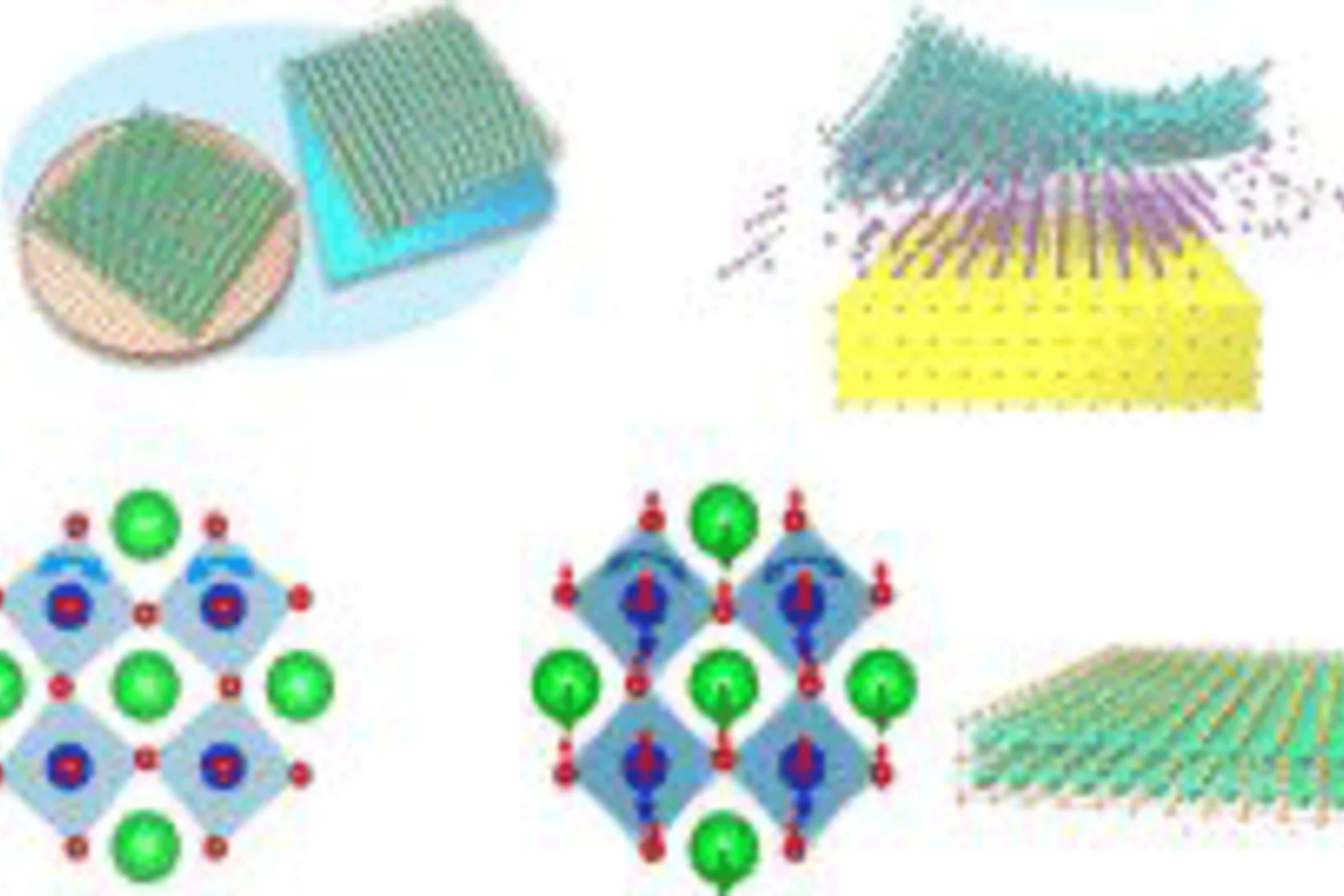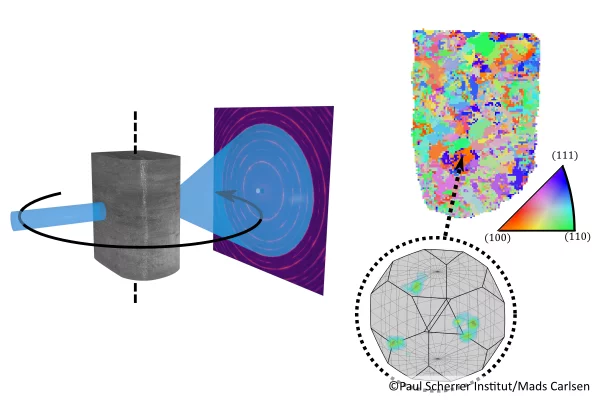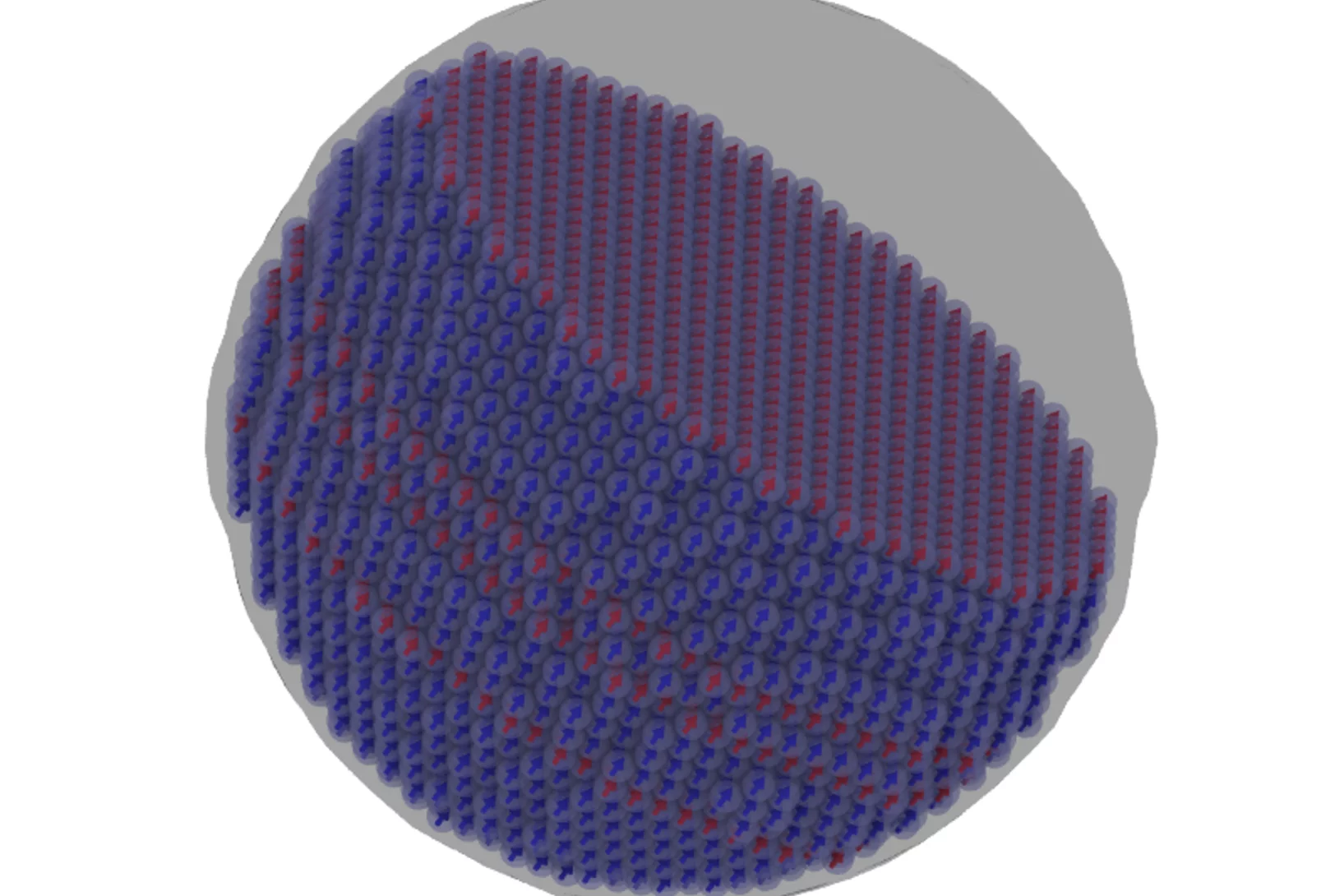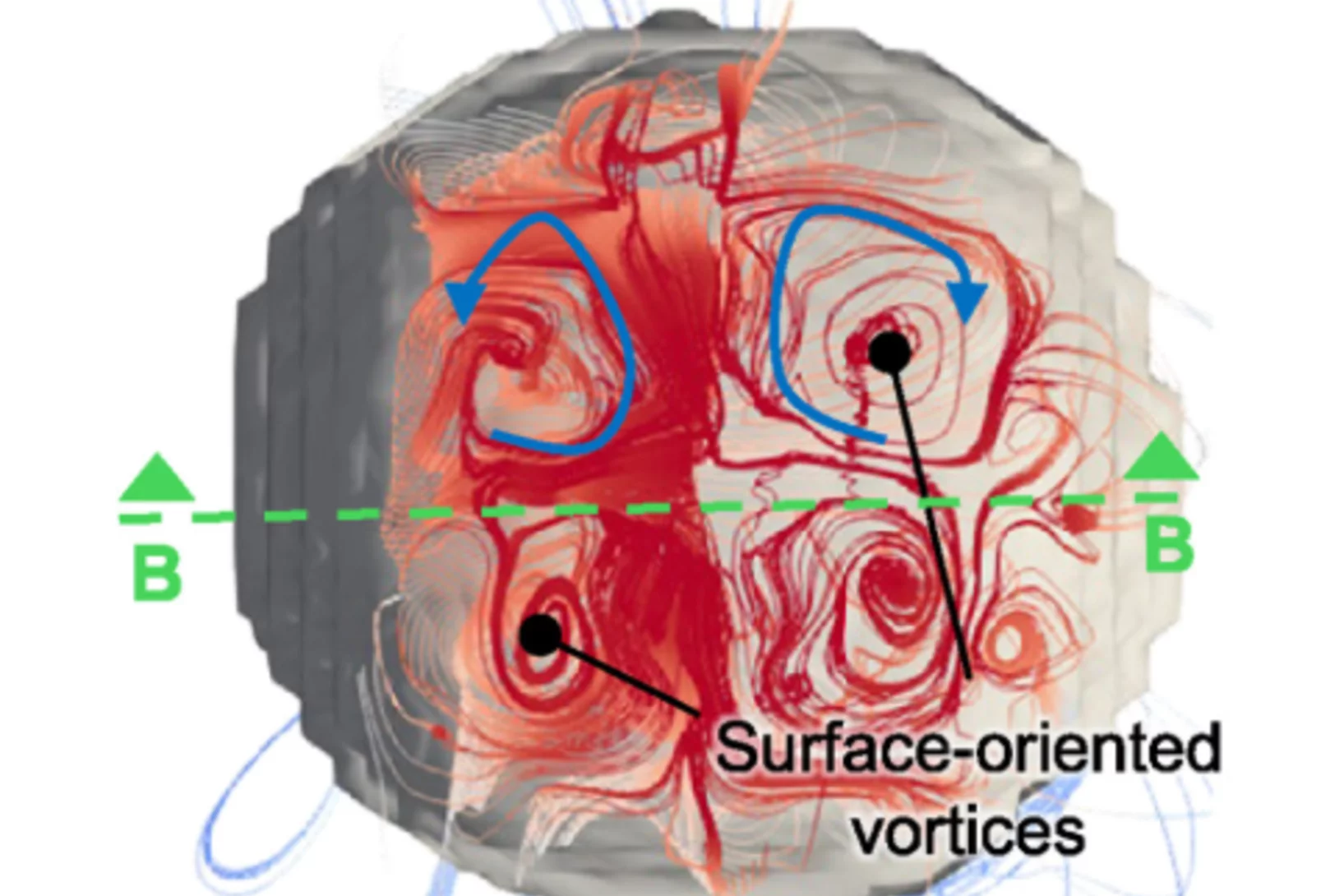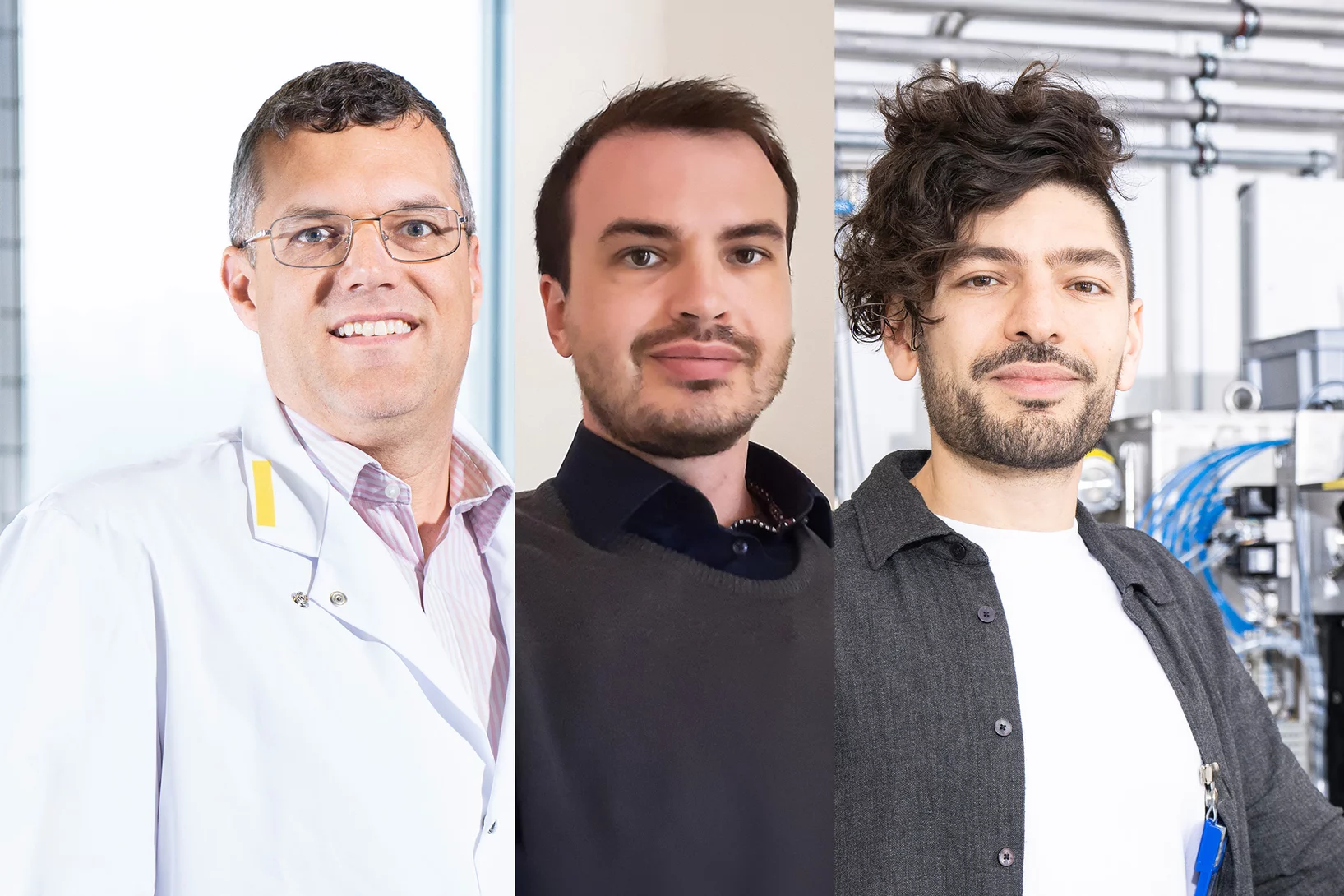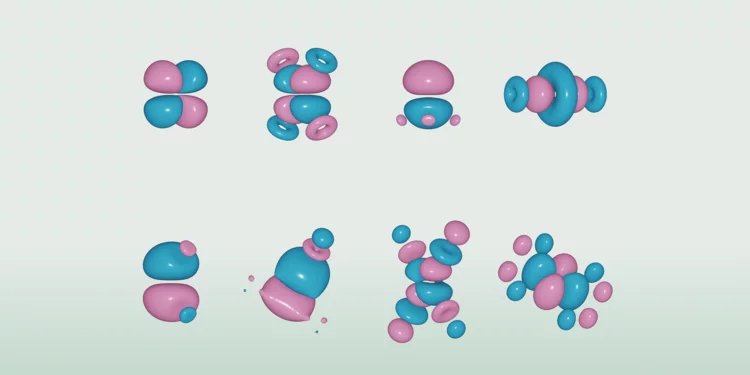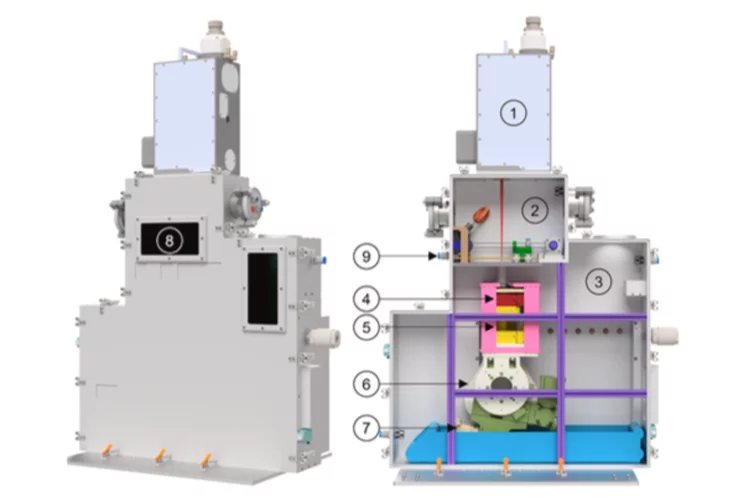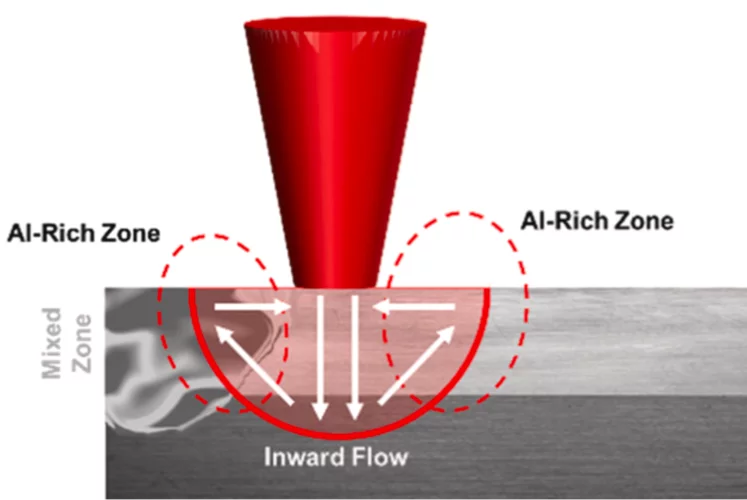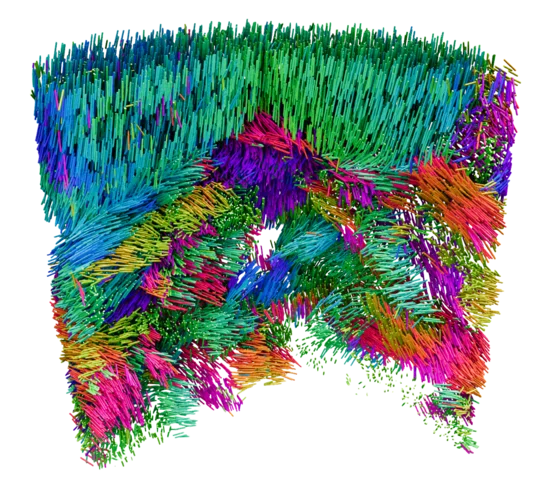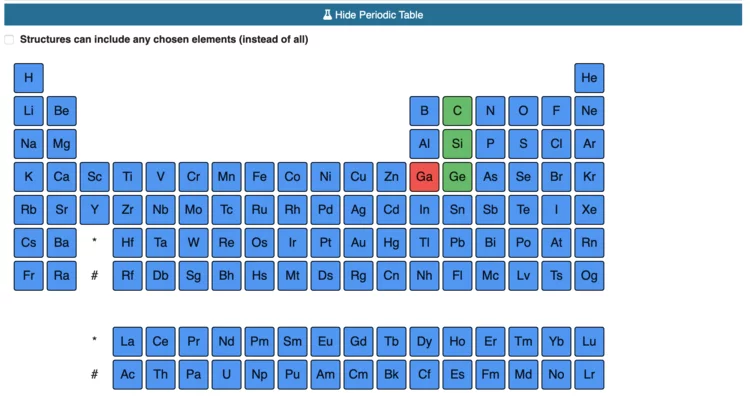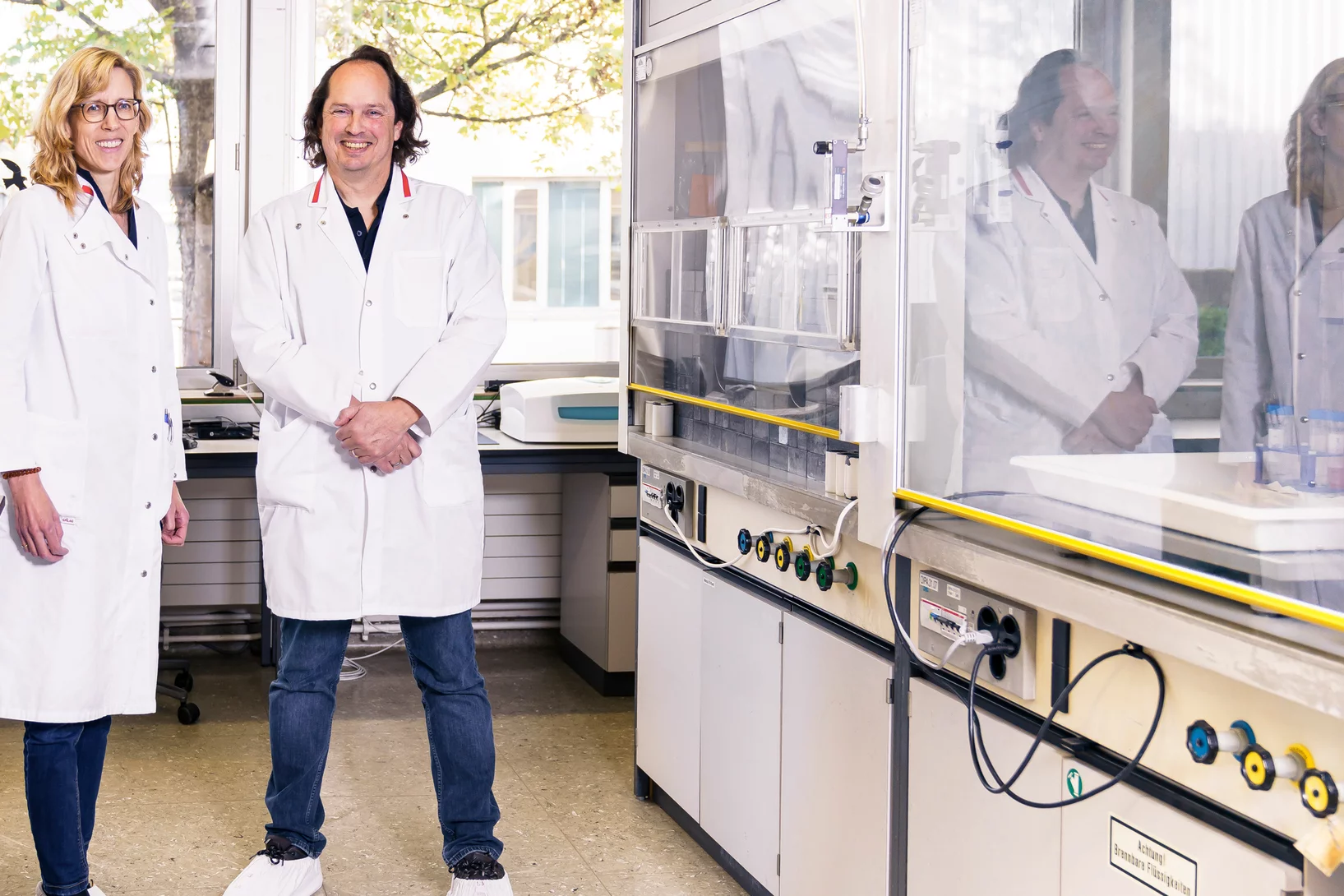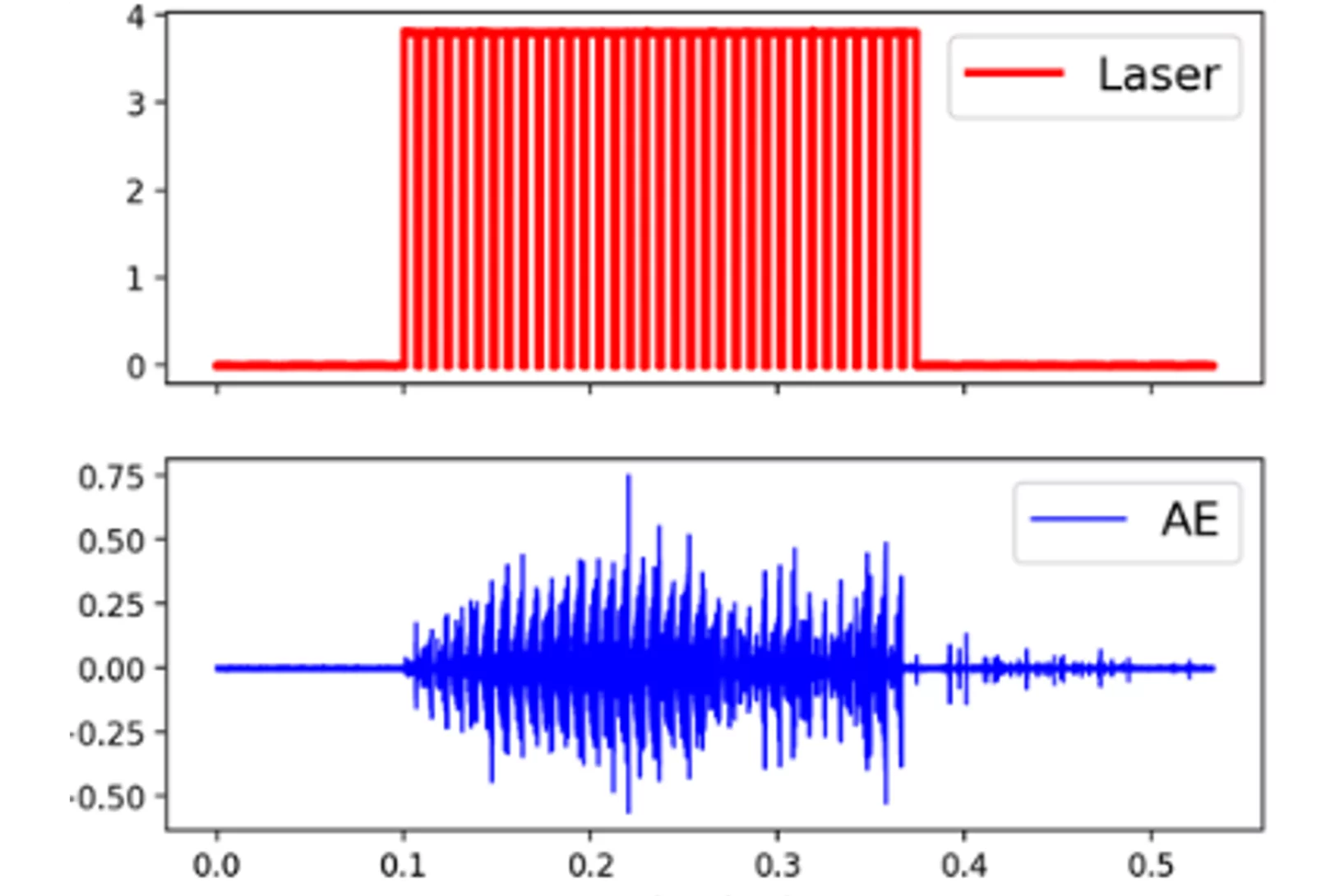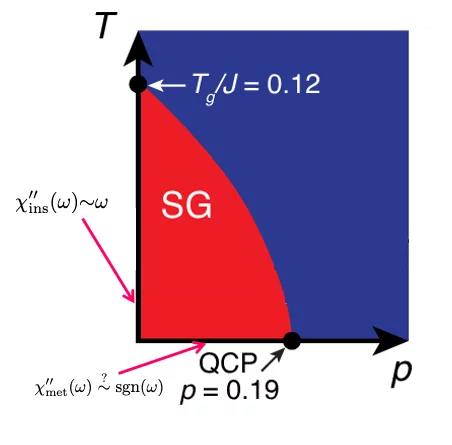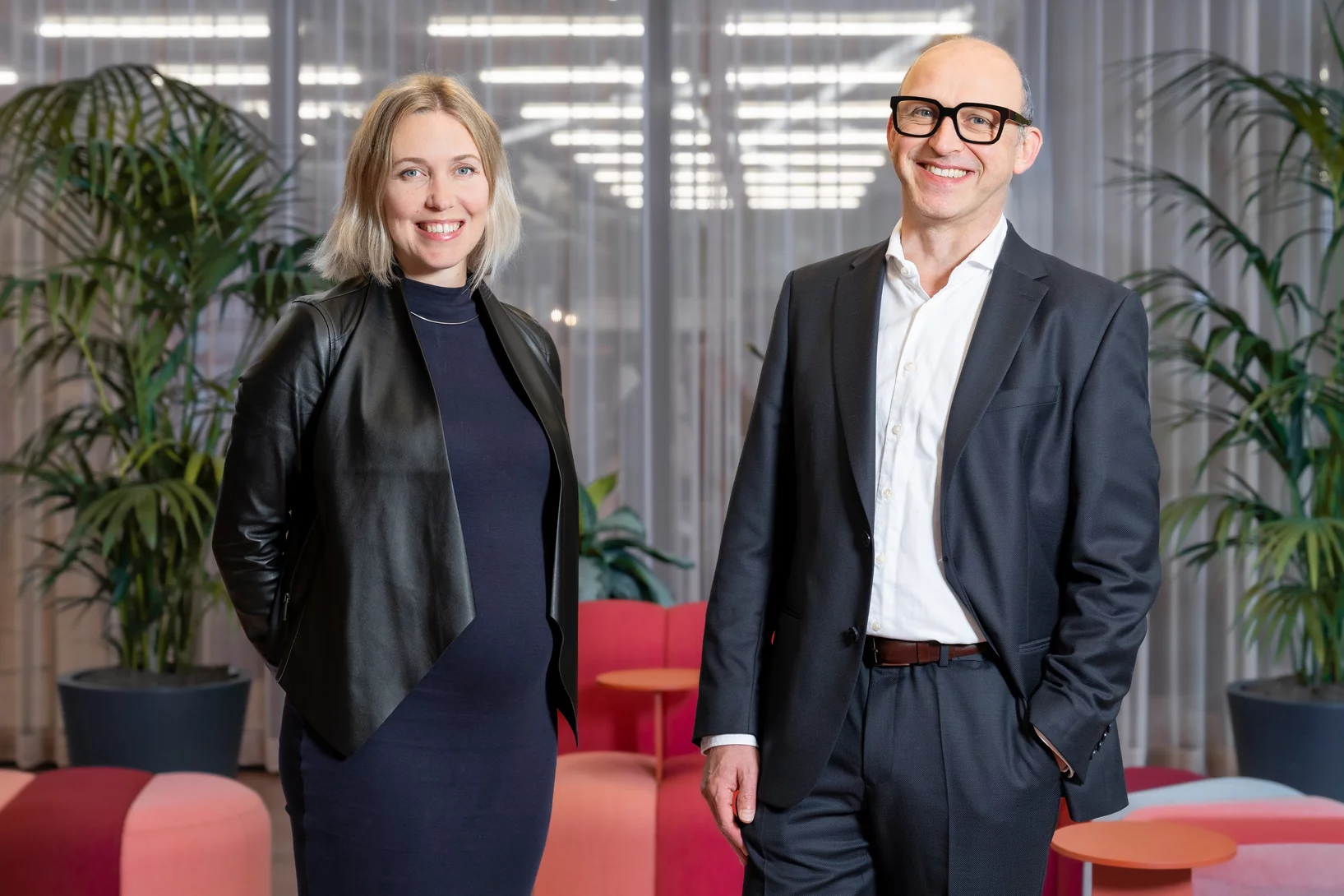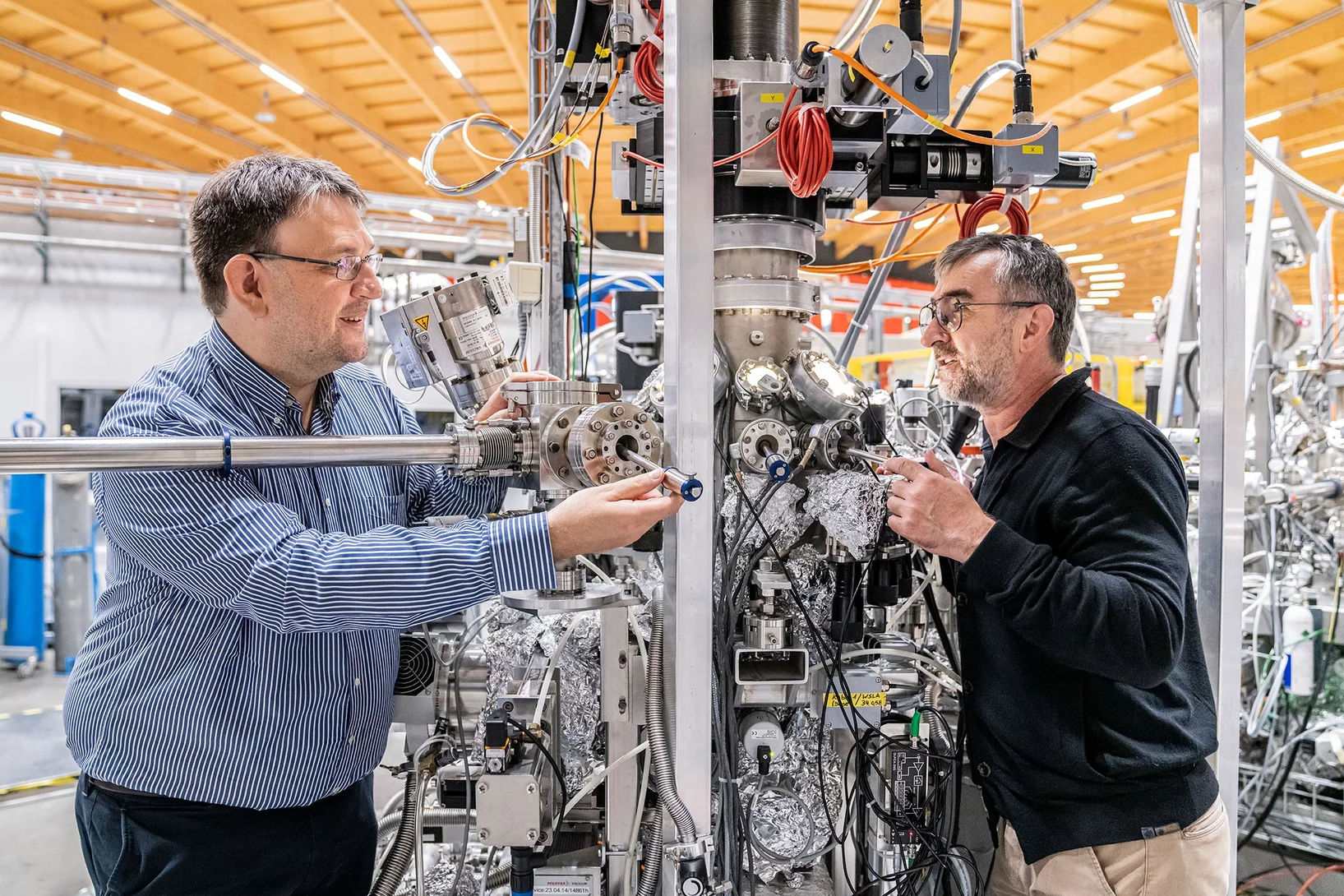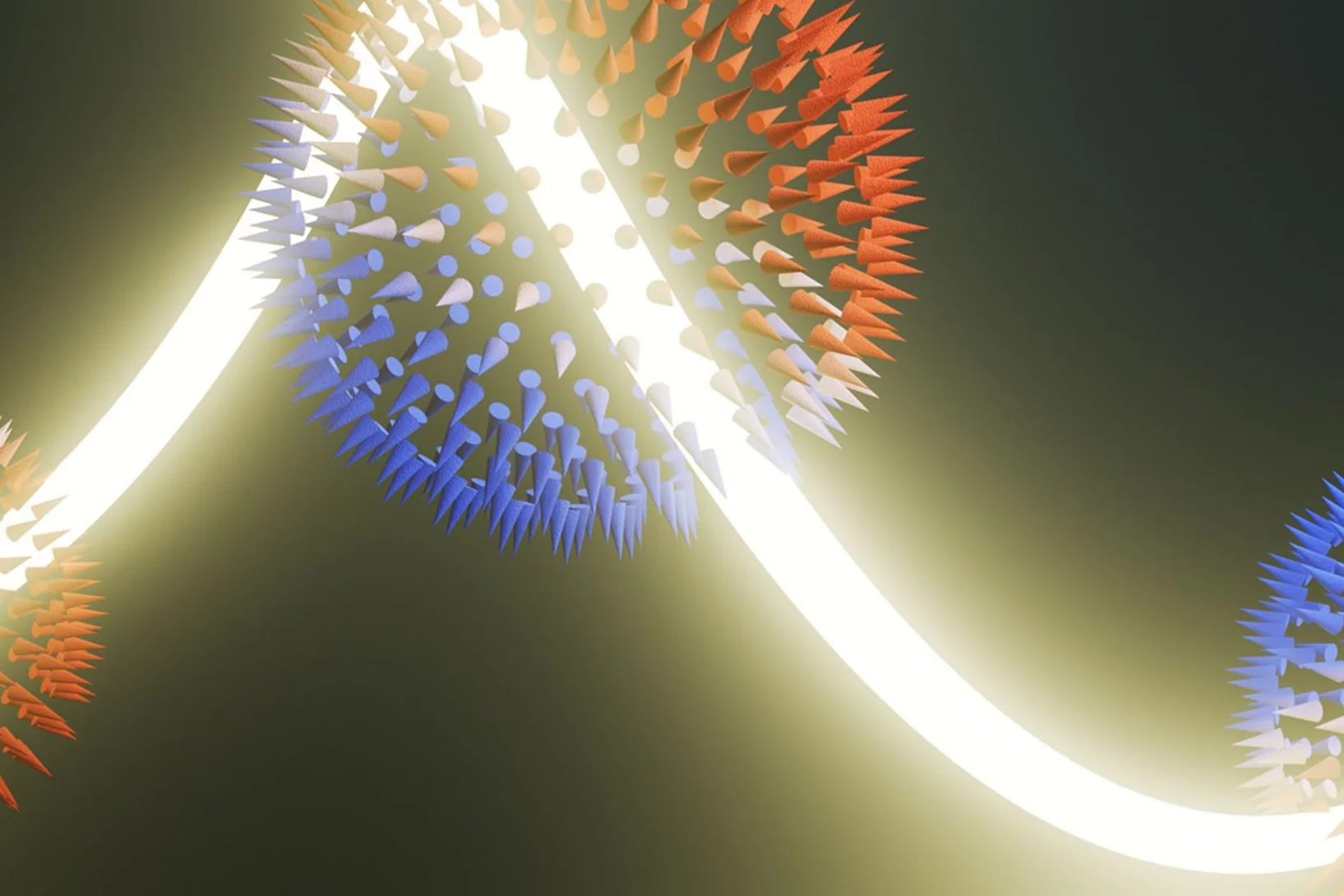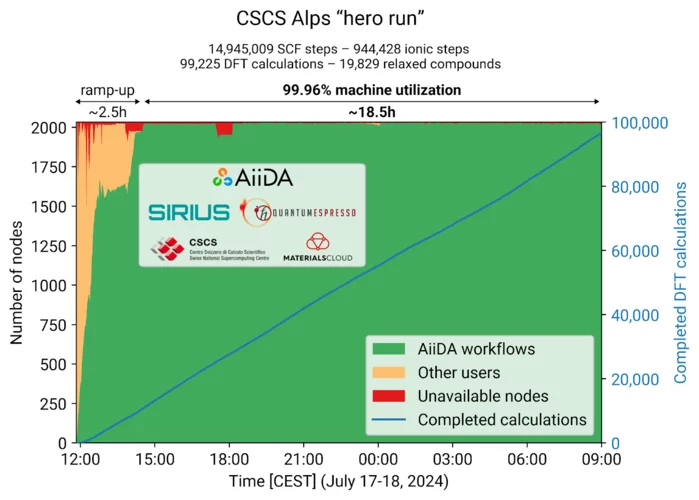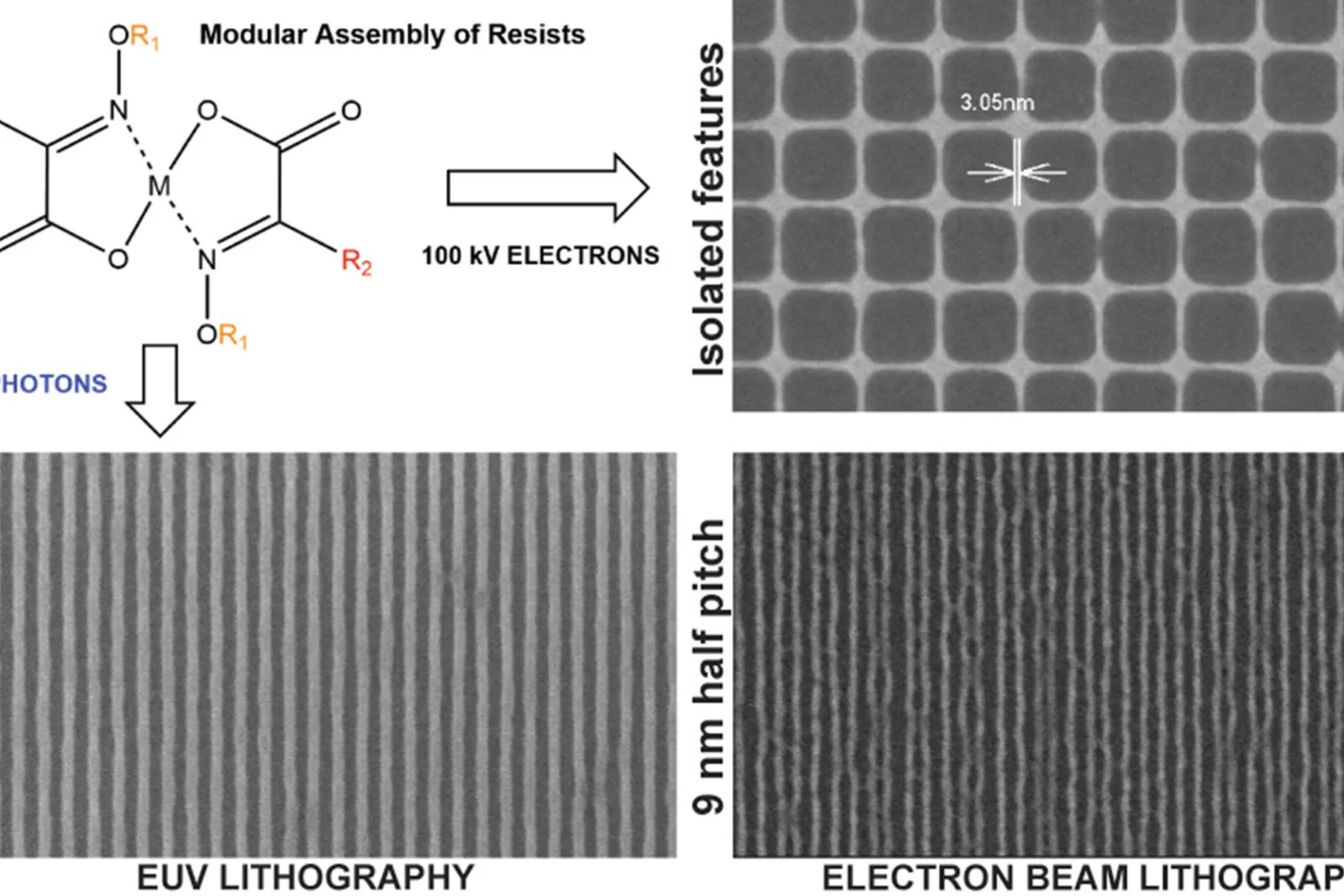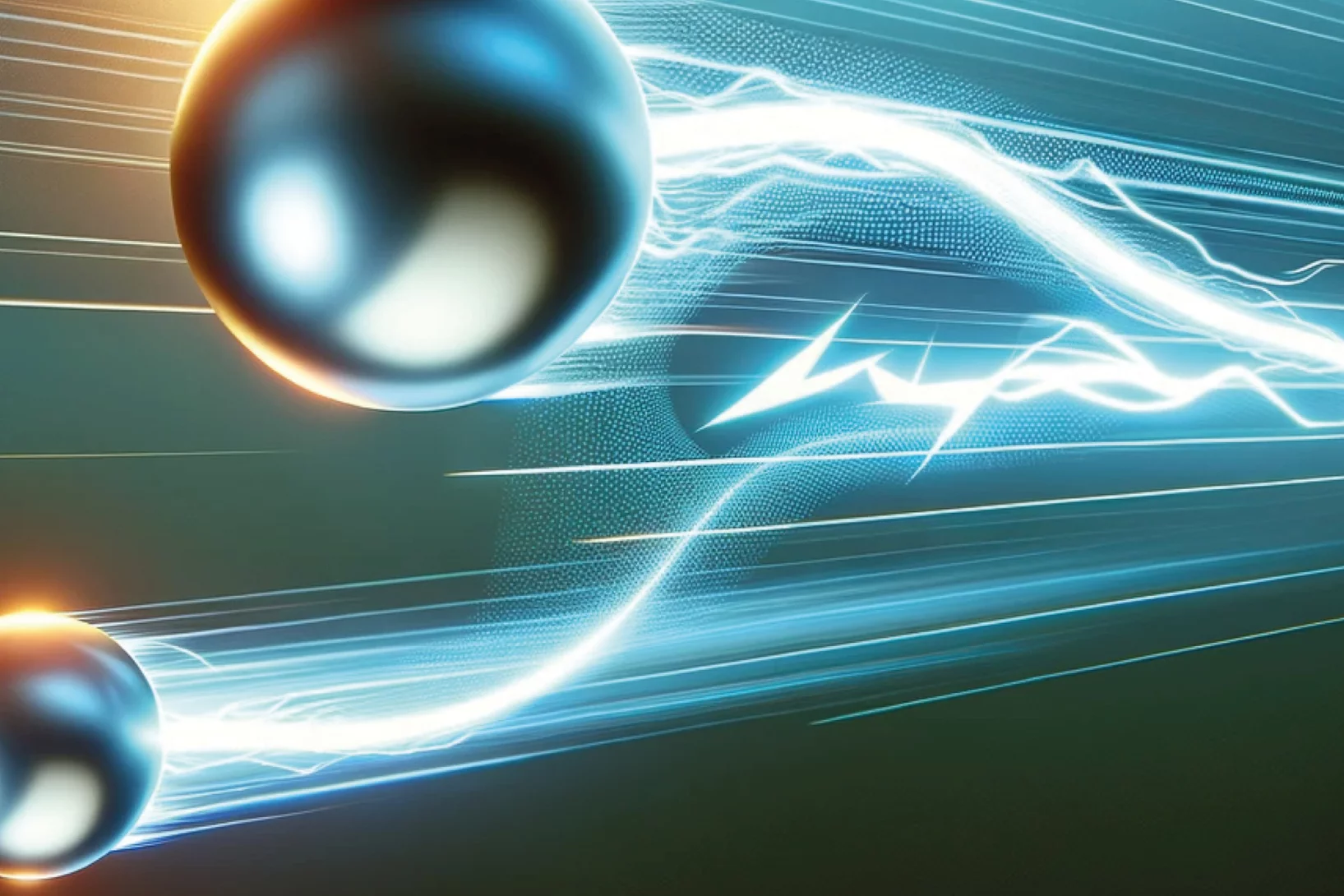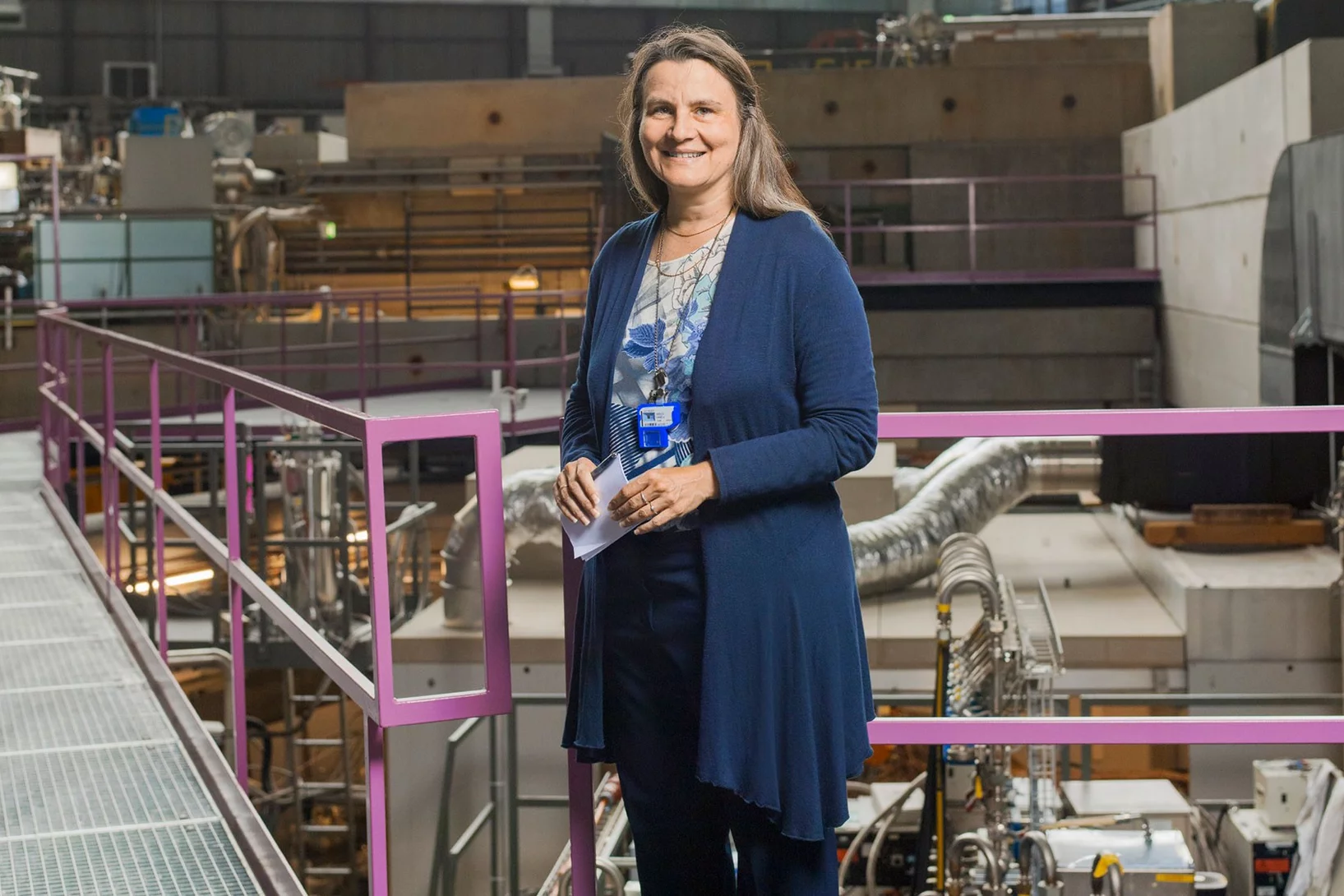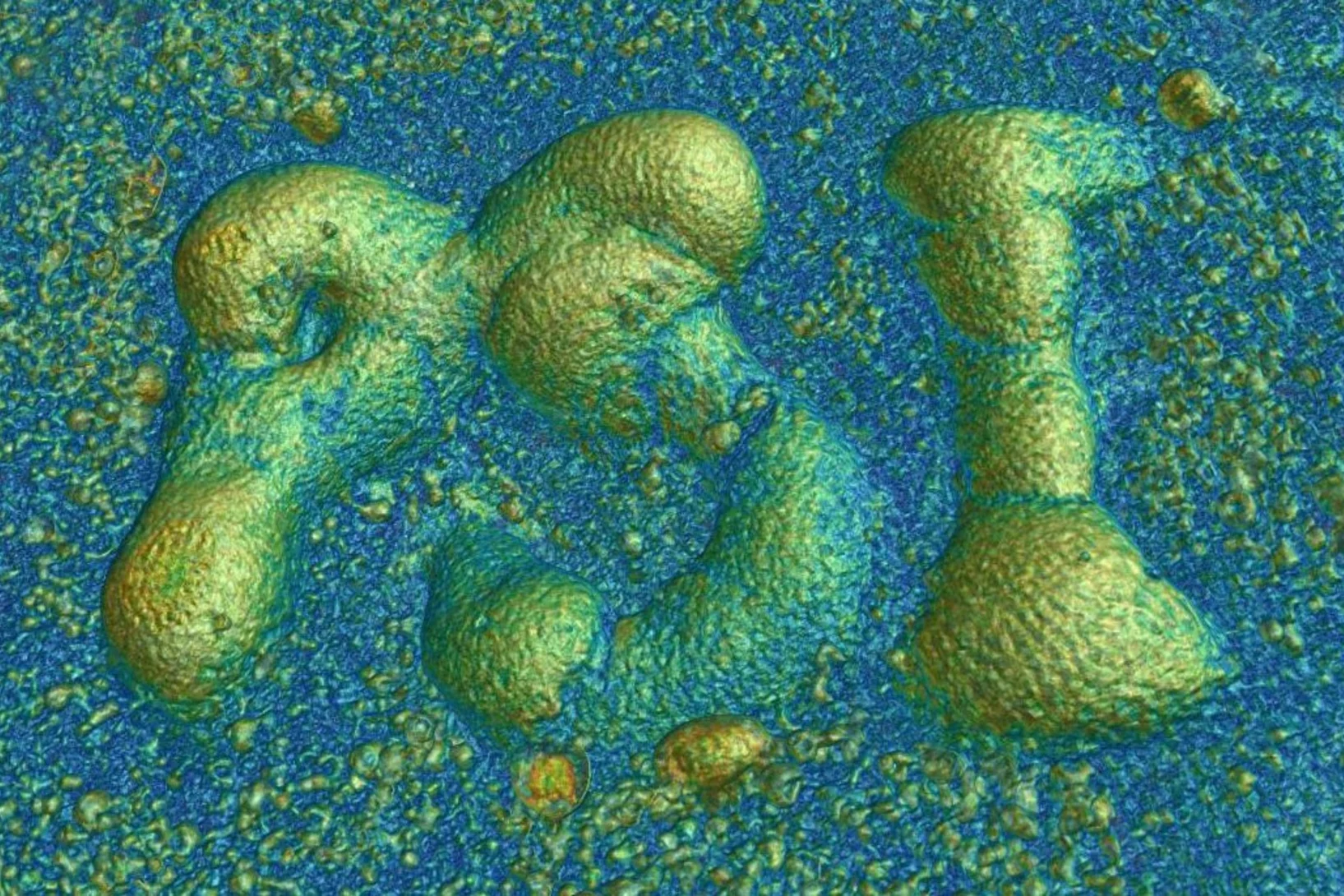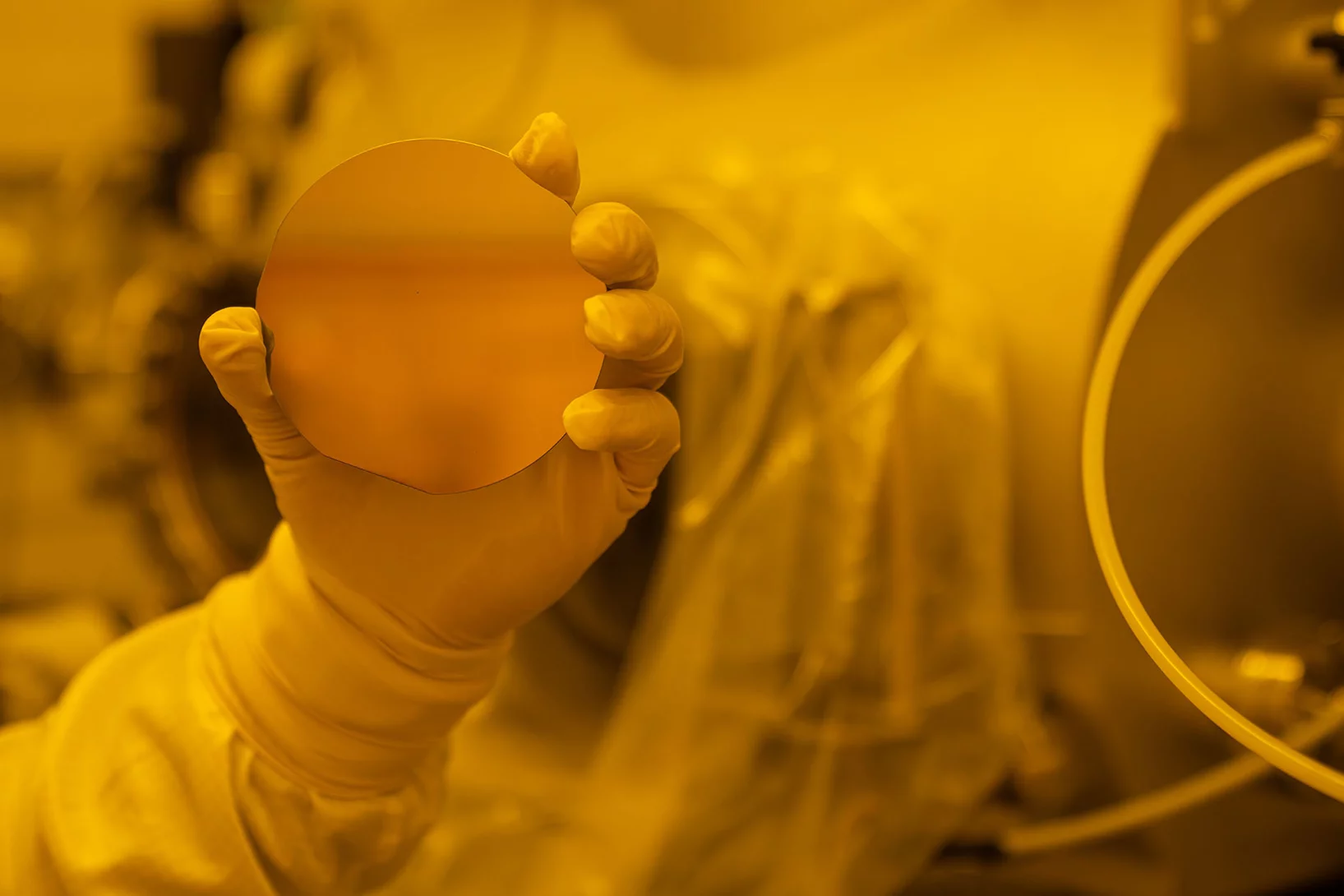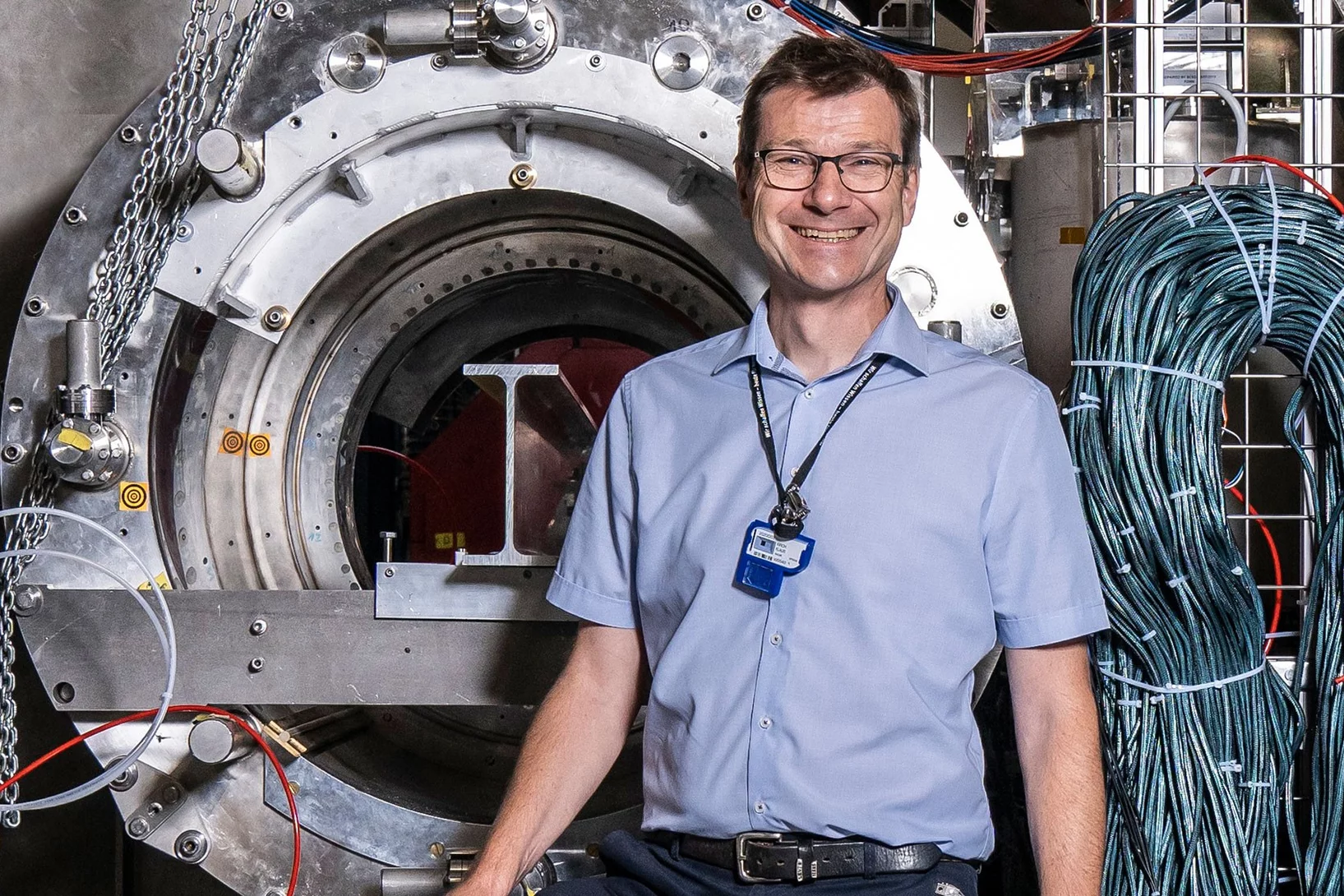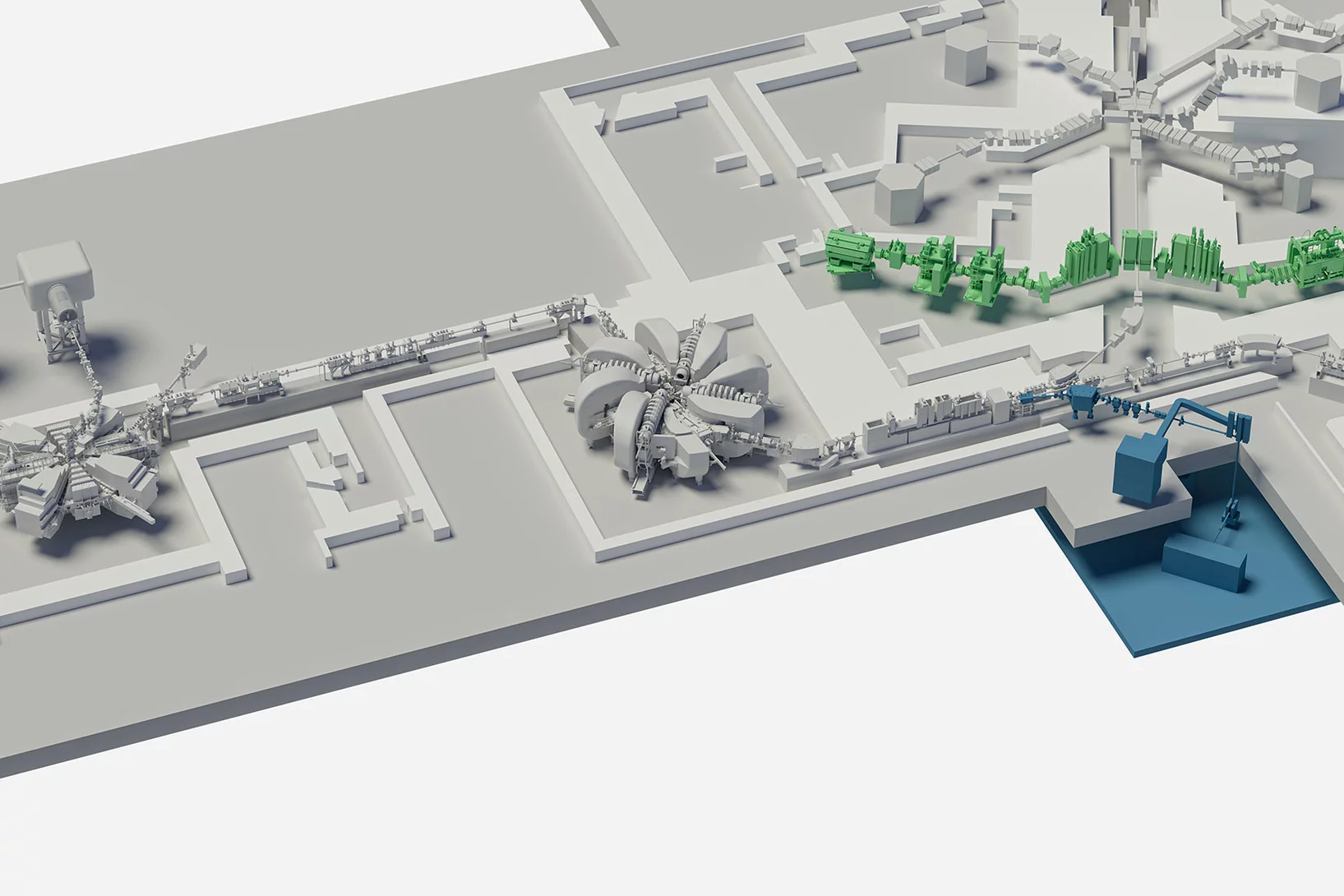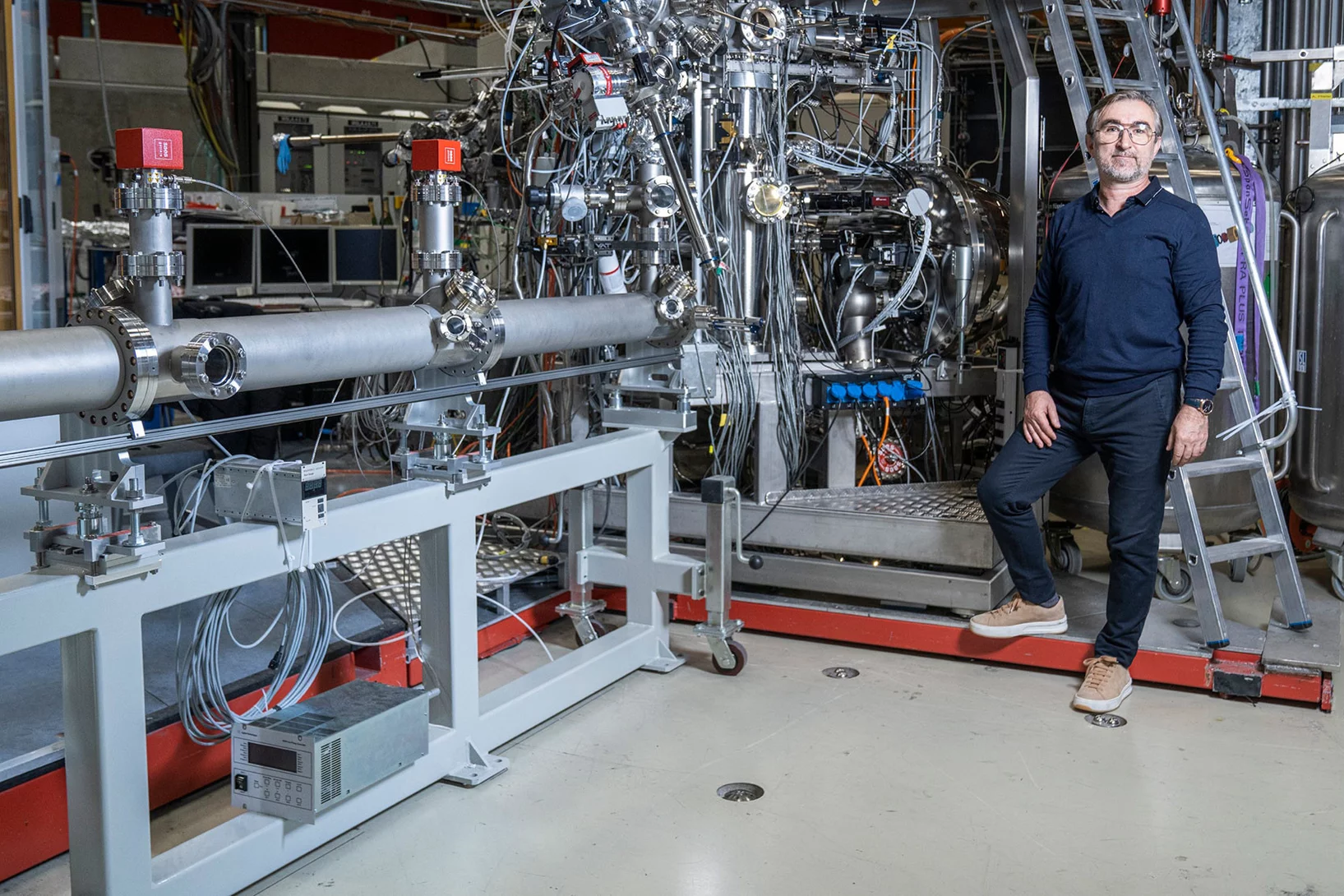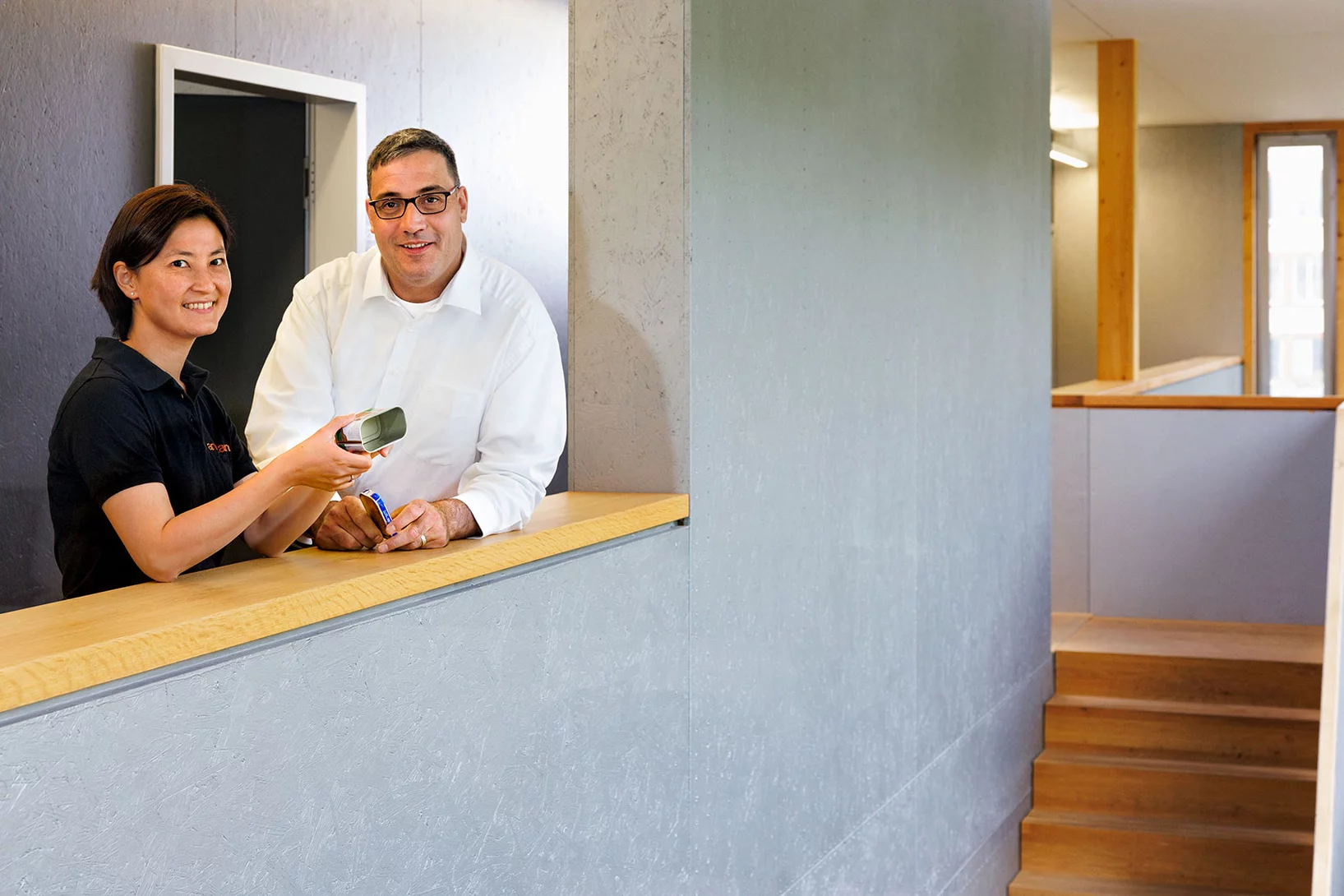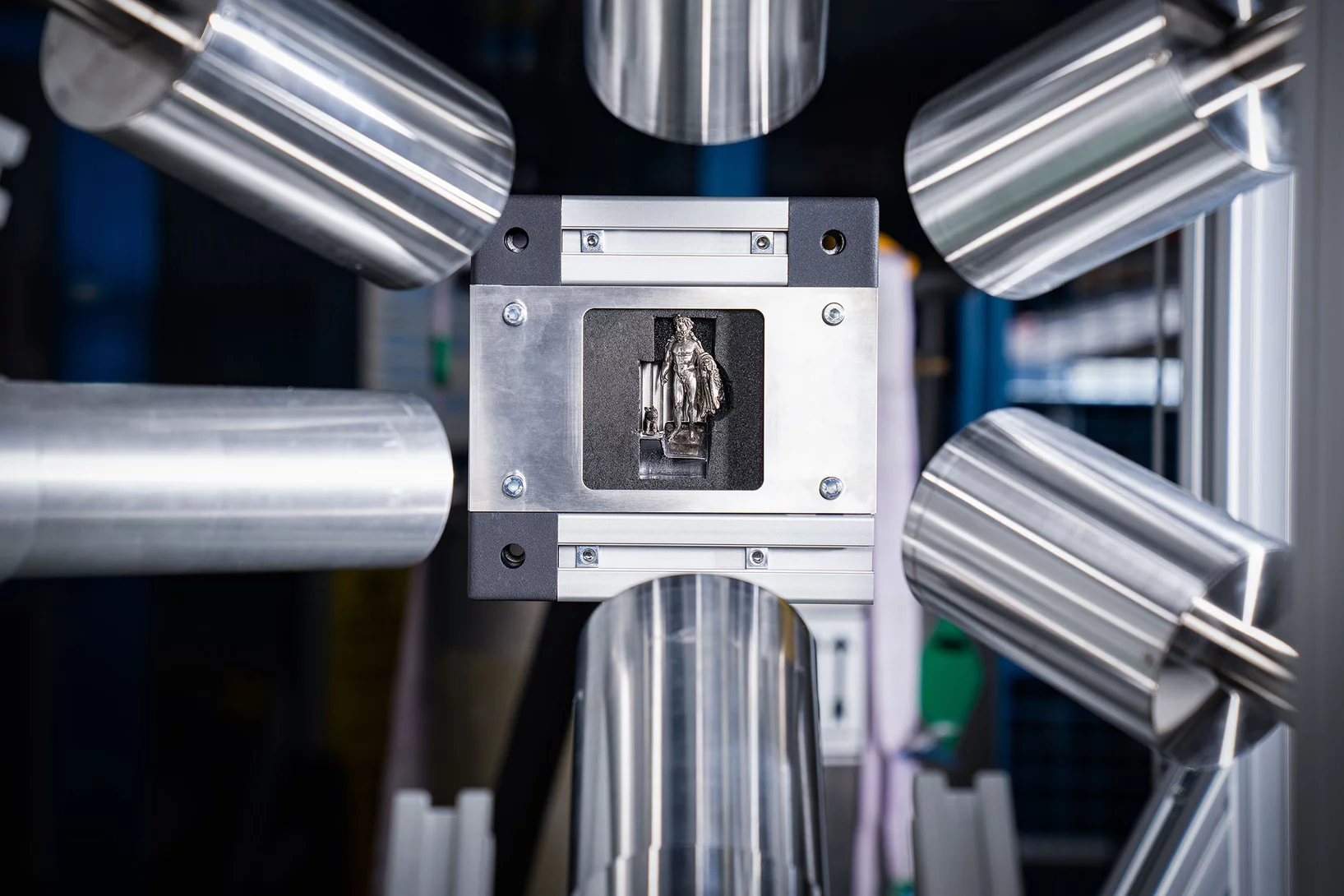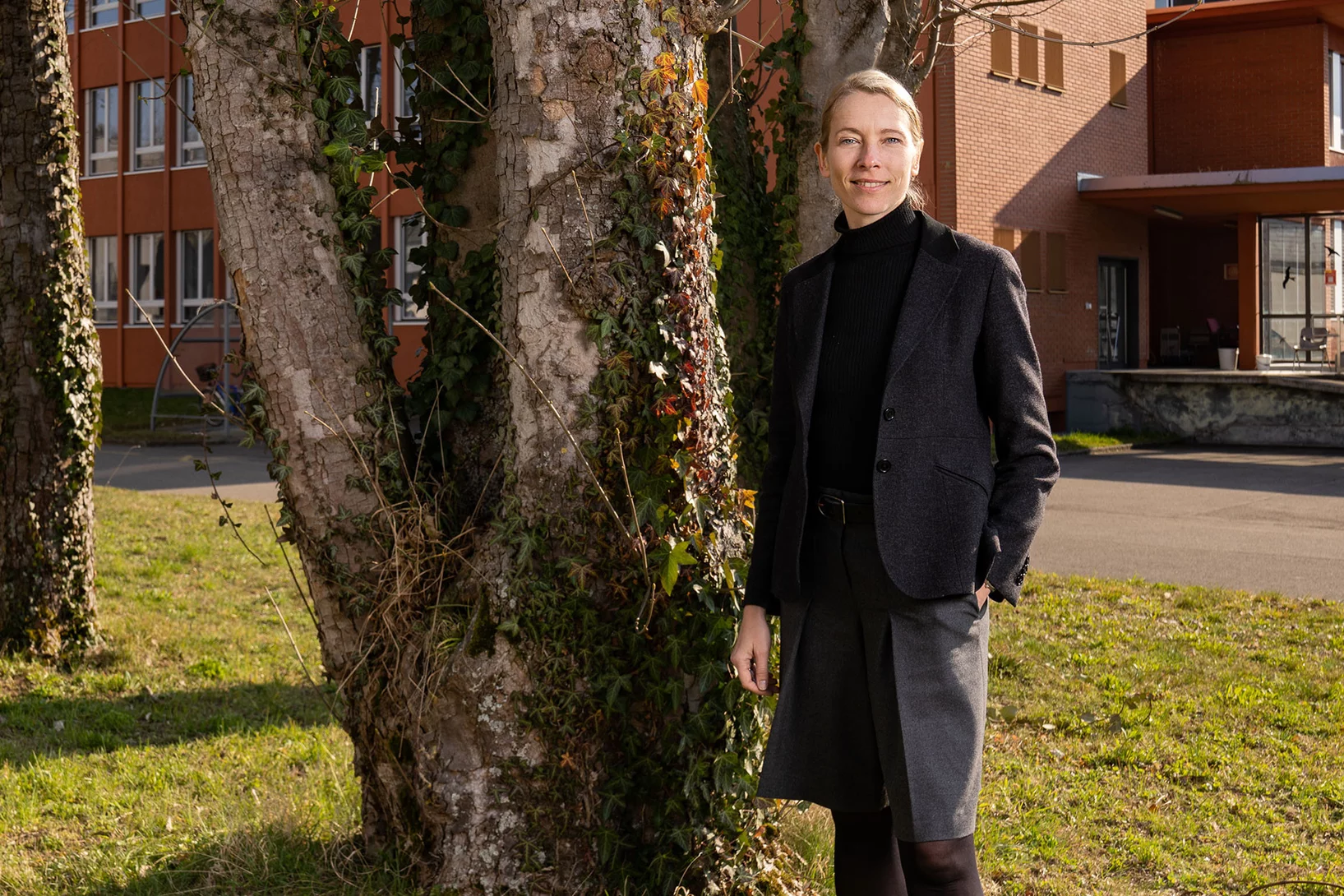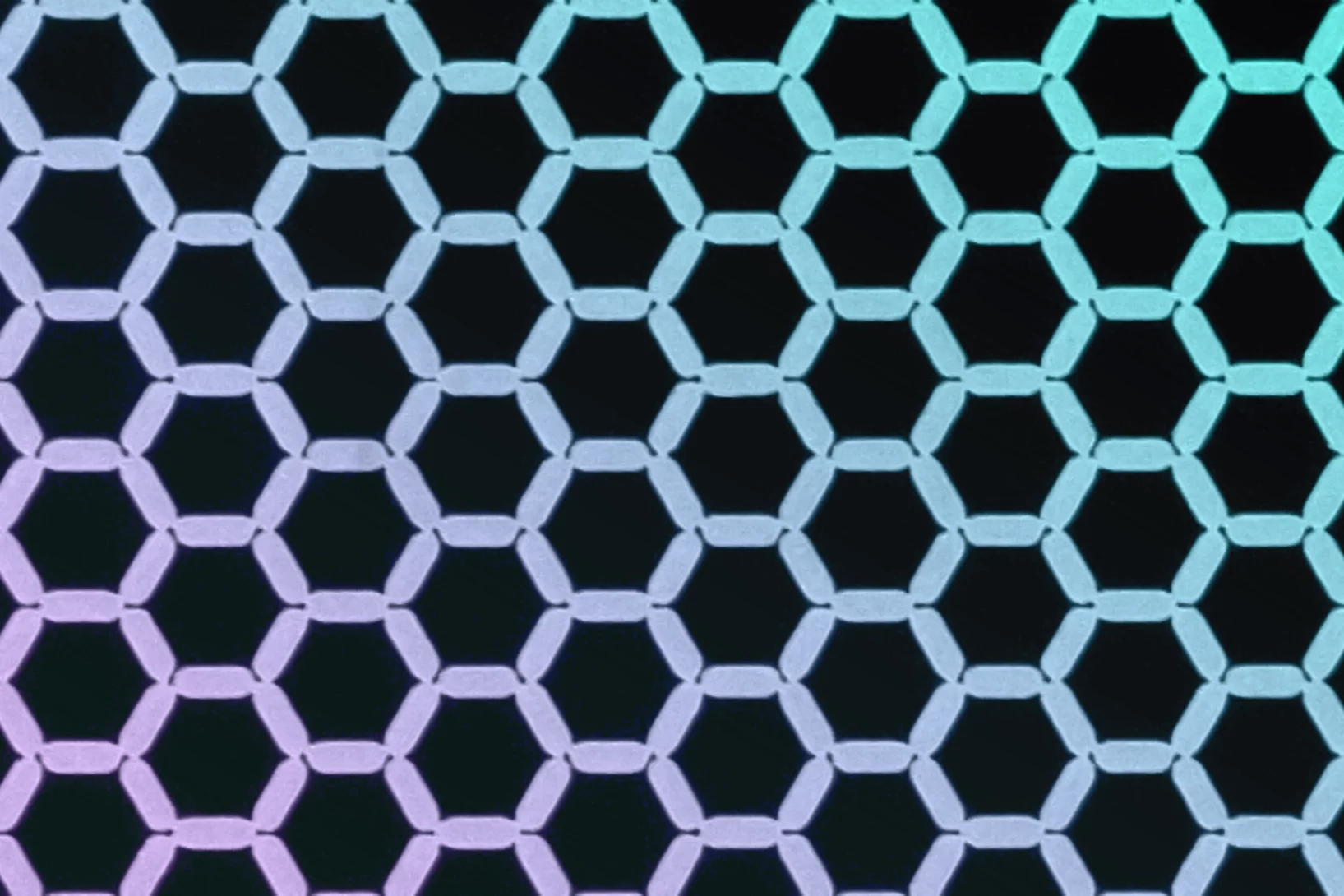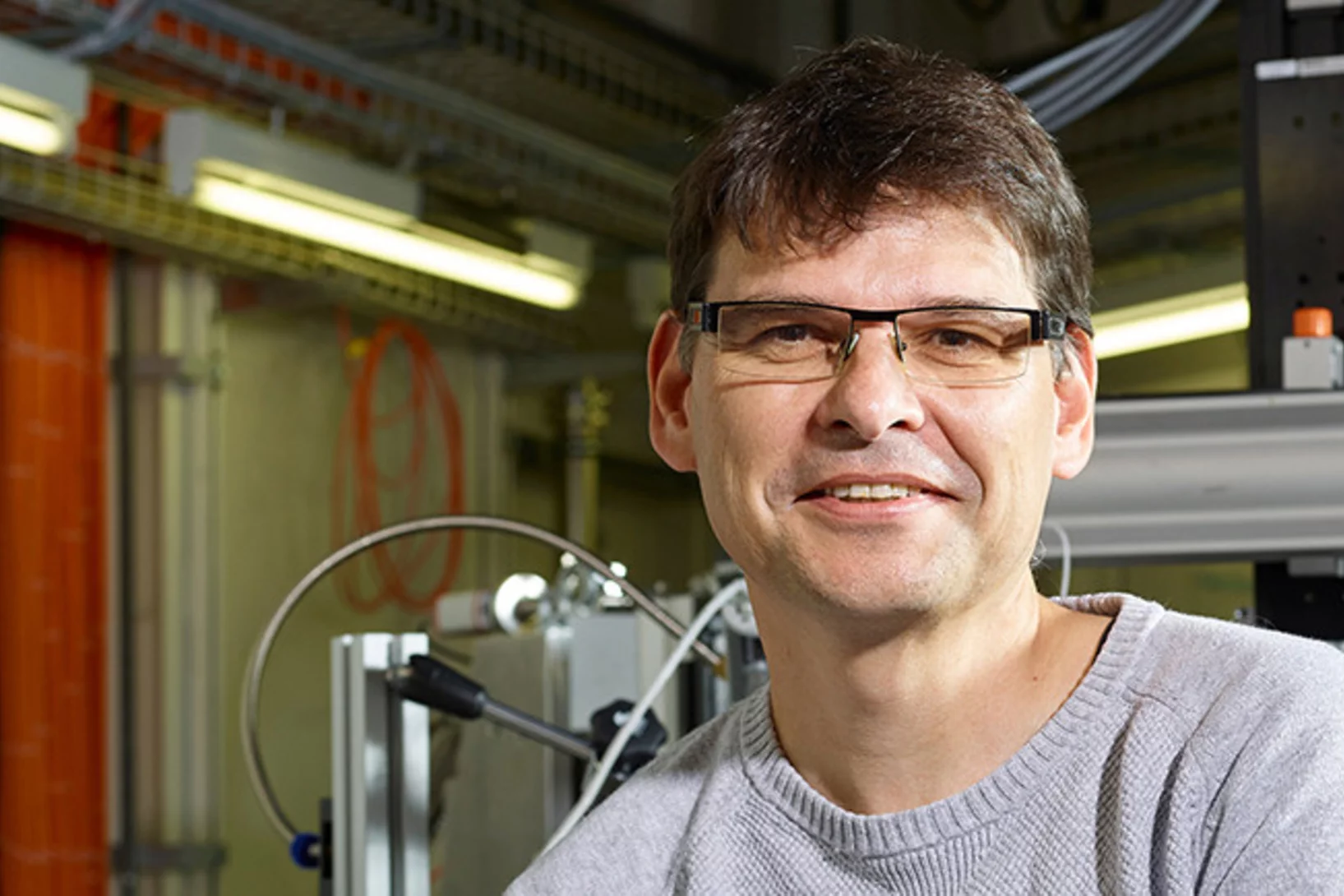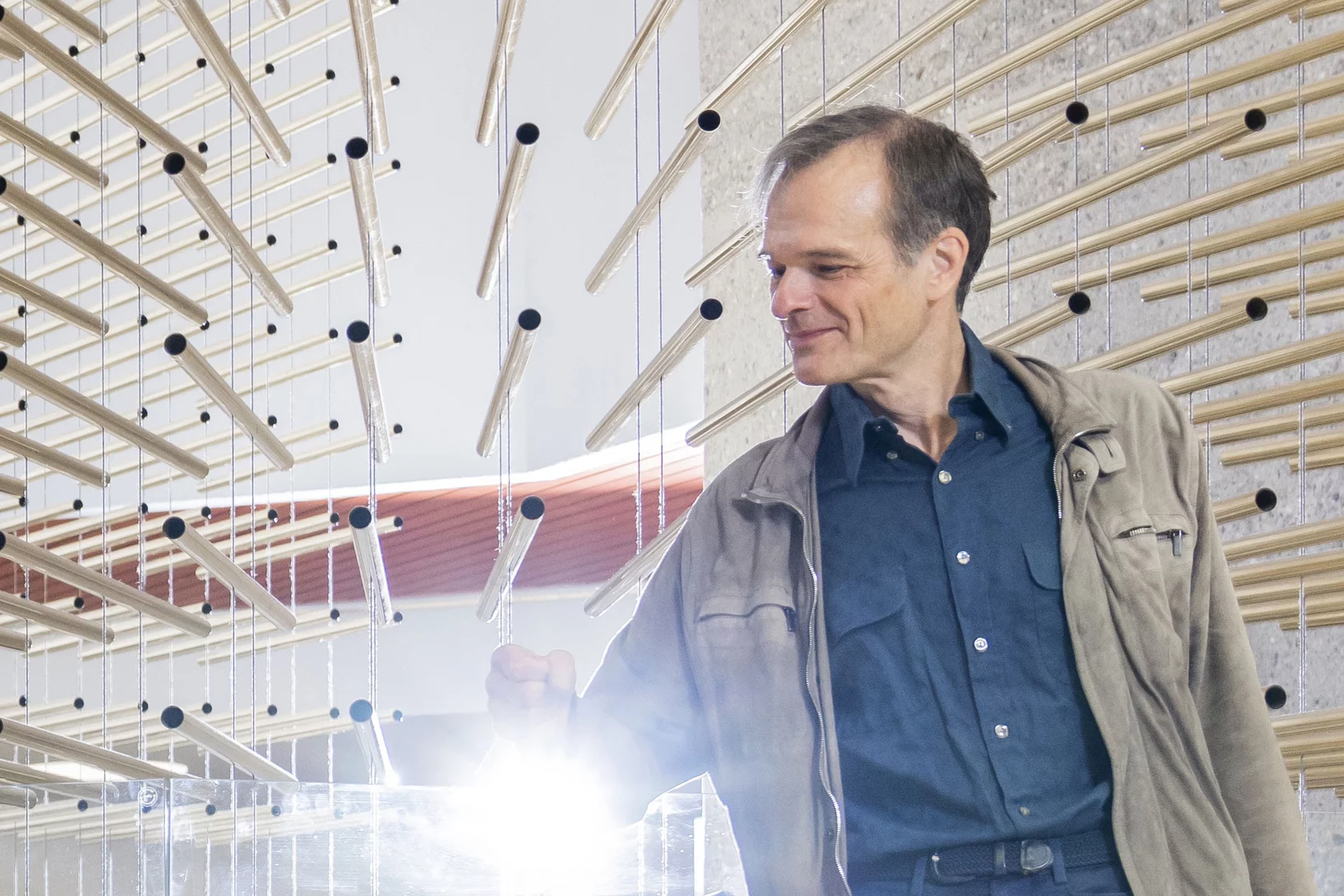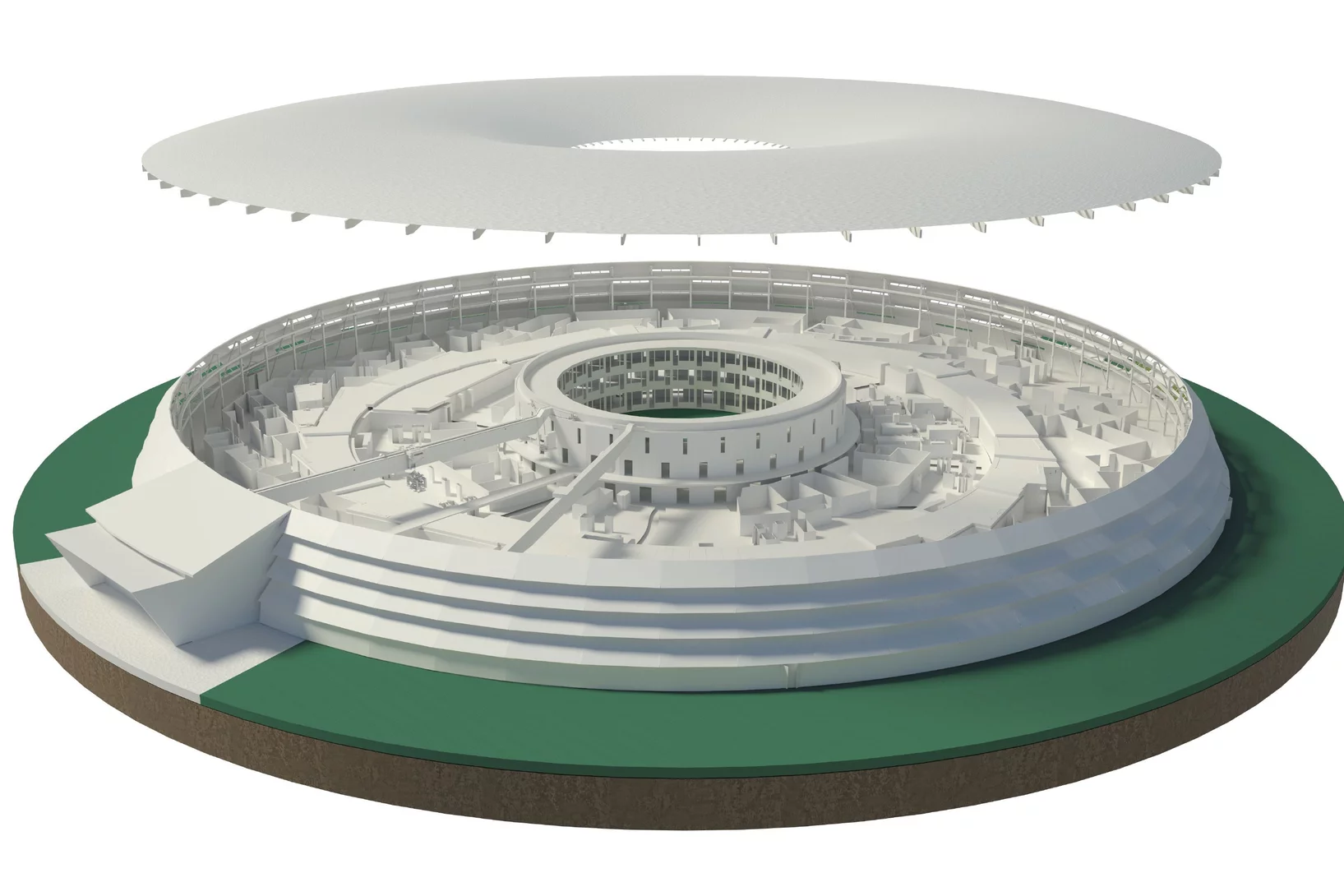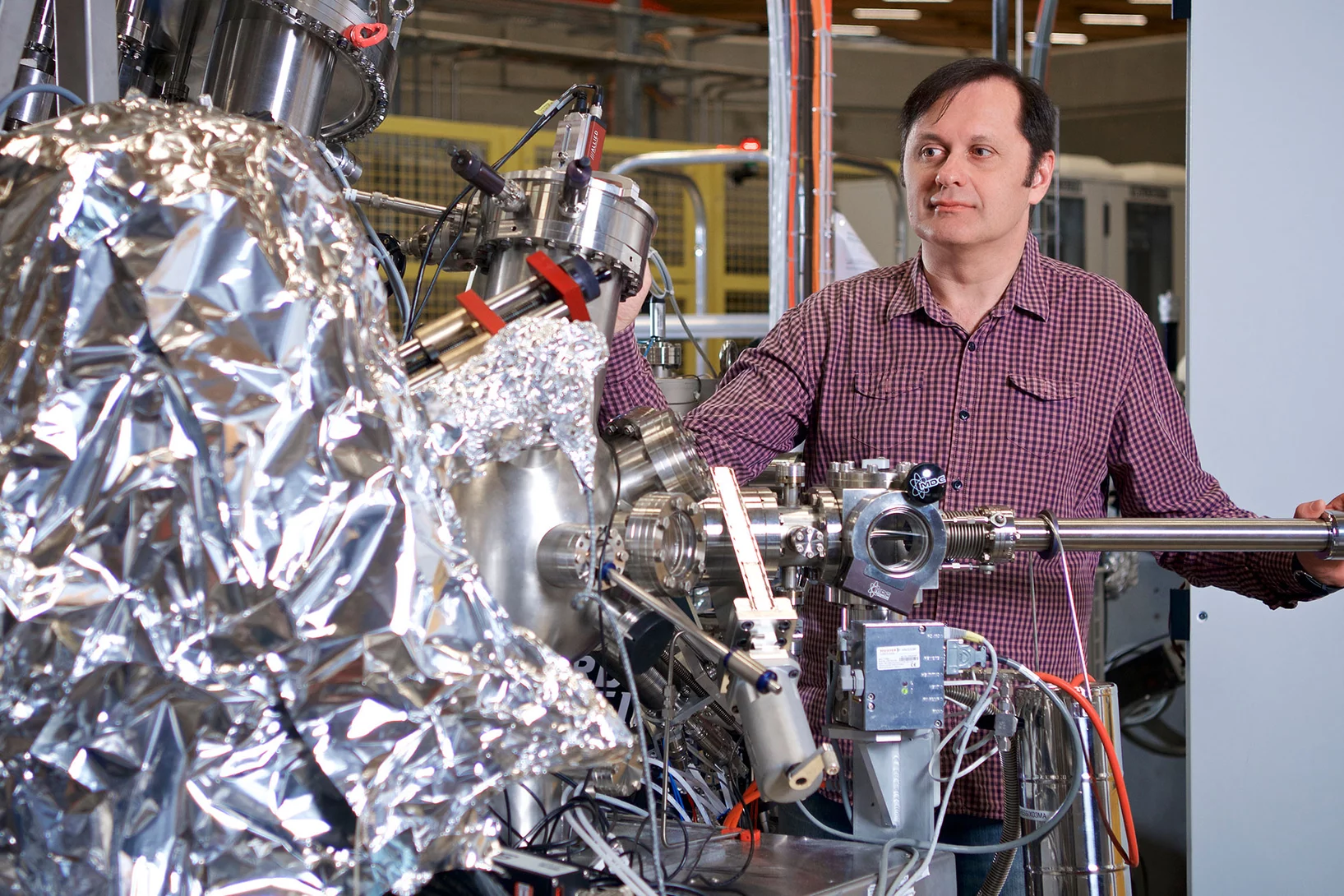Zink in verstopften Spritzen nachgewiesen
Für das Pharmaunternehmen MSD hat ANAXAM mithilfe von Forschenden des PSI untersucht, ob Zink zur Verstopfung von Fertigspritzen beitragen kann.
Cracking the Challenge of Steel–Copper Fusion
Why do cracks appear when joining steel and copper? We track the mechanisms in real time to find out.
Interfacial Phase Formation in 316L–CuCrZr Hybrids
In-situ X-ray diffraction reveals how phase separation and fluid flow shape microstructure in laser-welded multi-material metal builds.
Phase by Phase: How Stainless Steel and IN625 Solidify Together
Where steel meets superalloy: real-time X-ray snapshots reveal how composition and cooling shape metal during 3D printing
Mit KI zu grünem Zement
Forschende am PSI nutzen künstliche Intelligenz zur Entwicklung von umweltfreundlichen Zementrezepturen.
Steering magnetic textures with electric fields
Neutrons reveal a new way to control magnetism at the nanoscale
Stabilising fleeting quantum states with light
X-rays from SwissFEL probe emergent properties of quantum materials
Exzellenz-Zentrum der ESA in der Schweiz eröffnet
Die feierliche Eröffnung des «European Space Deep-Tech Innovation Centre» ESDI brachte hochkarätige Gäste zusammen.
Aluminium sichtbar gemacht
PSI-Forschende haben in Zeolithen erstmals die genaue Lage der Aluminiumatome bestimmt, welche die Materialien zu so guten Katalysatoren machen.
Nanostructure orientation in 3D with visible light by Tomographic Müller-Polarimetric Microscopy
We developed a new method, tomographic Müller-polarimetric microscopy (TMPM), that allows to retrieve at three-dimensional microscopic resolution the nanoscale structural information of the ultrastructure probed with polarized light in a non-destructive manner using a low cost and experimentally simple optical setup.
Primer on X-ray magnetic circular dichroism
X-ray magnetic circular dichroism (XMCD) is a magneto-optical effect that describes the difference in absorption between left and right circularly polarized X-rays by a magnetized material. It has been widely applied to the study of magnetic systems and of magnetic phenomena and its unique capabilities make it a fundamental tool for the study of novel magnetic phenomena and new materials systems.
Correlating transmission electron and soft x-ray microscopy to bridge atomic- and mesoscales
Transmission electron and soft x-ray microscopy have contributed significantly to our understanding of phenomena in fields ranging from biology to materials science. In this review, we present recent developments in combining transmission electron and soft x-ray microscopy techniques, including progress in sample environment, and in situ and operando approaches and highlight the unique opportunities offered by fully correlative transmission electron and soft x-ray microscopy.
Antiferrodistortive and ferroeletric phase transitions in freestanding films of SrTiO3
Epitaxially grown thin films are commonly used to strain engineer electronic properties by the choice of a substrate, and therefore do not match bulk properties (leading to properties that deviate from the bulk material). Free standing ultrathin oxide films are expected to preserve the bulk-like properties due to the absence of substrate influence. However, we show that this expectation is not fulfilled with ultrathin free standing SrTiO3, as they get ferroelectric at 80K.
Mapping crystallite orientation in bulk polycrystals
A new experimental technique allows the orientation distribution of small-grained polycrystal materials to me mapped in 3D.
Defect structure controls the thermal magnetic switching rate of nano-sized metallic particles.
Past experiments done at the Paul Scherrer Institut, probed the thermal switching properties of nano-sized metallic magnetic particles
Rethinking 3D Printing for ceramics
Using a powerful combination of in-situ X-ray imaging and high-fidelity simulations, researchers uncover how alumina behaves under laser-based 3D printing—paving the way for more reliable ceramic additive manufacturing.
Prestigeträchtige Förderung für Forschung am PSI
Beton, chemische Katalyse und die Suche nach neuer Physik – für diese Forschungsthemen erhalten drei PSI-Forschende je einen Grant des Schweizerischen Nationalfonds.
A new dimension of complexity for layered magnetic materials
X-rays reveal magnetic phenomena driven by interactions between the layers of a kagome ferromagnet
Texture and residual stress evolution during 3D printing
Discover how advanced neutron diffraction sheds light on the evolution of stress and texture in 3D-printed duplex stainless steel.
Mapping the ecosystem of Wannier Functions software
A new review article, just published in Reviews of Modern Physics and highlighted on the journal cover, provides a map to the vast landscape of software codes that allow researchers to calculate Wannier functions, and to use them for materials properties predictions. The authors, from all over Europe and the USA, include two PSI scientists. After providing readers with the theoretical foundations on Wannier functions and their calculation, together with intuitive graphical schematics to explain what Wannier functions are, the authors map the existing Wannier codes and the key applications.
Operando Neutron Characterization During 3D Printing
A new laser powder bed fusion device enables real-time neutron diffraction and imaging, providing detailed insights into structural evolution, defect formation, and temperature mapping during metal additive manufacturing.
Mitigating Cracks in Multi-Material Printing
Integrating metallic powders with thin foils in laser powder bed fusion can reduce interfacial cracks and improve microstructure quality in titanium-aluminum multi-material printing.
Mapping the Nanoscale Architecture of Functional Materials
A new X-ray technique reveals the 3D orientation of ordered material structures at the nanoscale, allowing new insights into material functionality.
New widgets and extensions expand the OSSCAR platform for educational notebooks in materials science
In a new article published in Computer Physics Communications, the team of the Open Software Services for Classrooms and Research project (OSSCAR) describes how to create custom widgets and extensions that can be used in interactive notebooks to teach computational materials science. The article also introduces two new entries in OSSCAR: a widget to display an interactive periodic table that allows users to group elements into different states, and one to plot and visualize electronic band structures and density of states.
IMPACT für die Schweizer Gesellschaft
Weltspitze bei den Myonen und in der Herstellung medizinischer Radionuklide: Die weitreichende Bedeutsamkeit des geplanten Upgrades.
Acoustic emission signature of a martensitic transformation
Acoustic emission monitoring in 3D printing: real-time insights into martensitic phase transformations and crack formation.
Exact solution of the classical and quantum Heisenberg mean field spin glasses
We solve and elucidate the physics of quantum Heisenberg spins glasses, which governs the local moments in randomly doped, strongly correlated materials.
Die ESA kommt in die Schweiz
Eine Vertragsunterzeichnung zwischen der Europäischen Weltraumorganisation ESA und dem PSI markiert den Start des «European Space Deep-Tech Innovation Centre» ESDI.
Magnetismus in dünnen Schichten: Ein Elektron macht den Unterschied
Ein wichtiger Schritt zu neuartigen Computerspeichern
Orbitronics: new material property advances energy-efficient tech
Discovery of orbital angular momentum monopoles boosts the emerging field of orbitronics, an energy-efficient alternative to electronics.
Computational marathon matches the efficiency of the AiiDA platform with the power of Switzerland Alps supercomputer
A group of researchers from the LMS lab at PSI has conducted a "hero run" on the new Swiss supercomputer, occupying it entirely for about 20 hours with calculations managed remotely by the AiiDA software tools. The run demonstrated the efficiency and stability of AiiDA, that could seamlessly fill the entire capacity of an exascale machine, as well as the performance of the Alps supercomputer, that has been just inaugurated. All the results will soon be published on the Materials Cloud.
Novel Photoresist Chemistry Enables Lithography Approaching Angstrom-Scale Resolution
Photoresist materials are crucial in the manufacturing of computer chips, where the circuits are initially printed in the photoresist using photolithography. As the demand for smaller and more precise circuitry in computer chips grows, photoresists must resolve features with smaller sizes and higher density. One of the factors determining the ultimate resolution in lithography is the molecular size/mass of the photoresists.
International collaboration lays the foundation for future AI for materials via the OPTIMADE standard
Artificial intelligence (AI) is accelerating the development of new materials. A prerequisite for AI in materials research is large-scale use and exchange of data on materials, which is facilitated by a broad international standard. A major international collaboration including researchers from the LMS laboratory now presents an extended version of the OPTIMADE standard.
Charge fractionalisation observed spectroscopically
Quantum mechanics tells us that the fundamental unit of charge is unbreakable – but exceptions exist.
«IMPACT ist für den internationalen Wettbewerb sehr wichtig»
Daniela Kiselev spricht über das geplante Upgrade an der Protonenbeschleunigeranlage des PSI.
3-D-Einblicke in neuartiges Fertigungsverfahren
Mit 3-D-Druck komplexe Formen herstellen
Neues Verfahren für noch kompaktere Computer-Chips
Forschende des PSI nutzen extremes UV-Licht zur Herstellung winziger Strukturen für die Informationstechnologie.
«Ein Juwel, das man pflegen muss»
HIMB ist eines der beiden Teile des Upgrades IMPACT. Klaus Kirch erzählt von den Plänen.
Doppeltes Upgrade für die Protonenanlage
HIPA soll ab 2025 ein doppeltes Upgrade erhalten. Die Vorbereitungen dafür laufen jetzt.
Neue Materialien für den Computer der Zukunft
Forschende identifizieren und untersuchen Materialverbindungen, deren spezielle Eigenschaften neuartige Mikrochips möglich machen könnten.
Von Fusionsreaktoren, Brennstoffzellen und Konservendosen
Das Technologietransferzentrum ANAXAM erleichtert den Zugang zur Materialanalytik am PSI.
Herkules und Akkus durchleuchtet
Mit Myonen lassen sich können PSI-Forschende Objekte zerstörungsfrei untersuchen. Das hilft in der Archäologie und bei der Batterie-Entwicklung.
«Wenn man in einer gewissen Position ist, sollte man sich nicht verstecken»
Kirsten Moselund leitet das neue Labor für Nano- und Quantentechnologien. Im Interview spricht sie über die Quantenforschung am PSI und wie die Nanophotonik dabei helfen kann.
Blick in die magnetische Zukunft
PSI-Forschende beobachten erstmals spezifisches Verhalten von magnetischem Eis.
Simulation soll bei Aufräumarbeiten in Fukushima helfen
Eine neue Simulation der gefährlichsten radioaktiven Trümmer des Kernkraftwerks Fukushima soll bei Aufräumarbeiten helfen.
Mit Topologie zu kompakteren Quantencomputern
Auf dem Weg zu besonders stabilen Quantenbits haben Forschende die Elektronenverteilung in zwei Halbleitern genau untersucht.
Millionenförderung für Hirn- und Quantenforschung
Der Europäische Forschungsrat bewilligt PSI-Projekte zur Entwicklung eines Quantencomputers und zur Hirnforschung in Höhe von 5 Millionen Euro.
Halbleiter erreichen die Quantenwelt
Mit einem Supraleiter aufgemotzt: Die Halbleitertechnologie könnte eine neue Wendung erhalten, indem Quanteneffekte in Supraleitern ausgenutzt werden.


